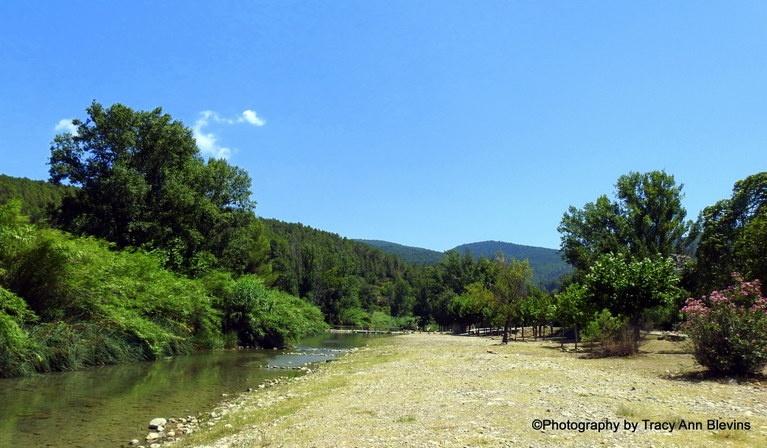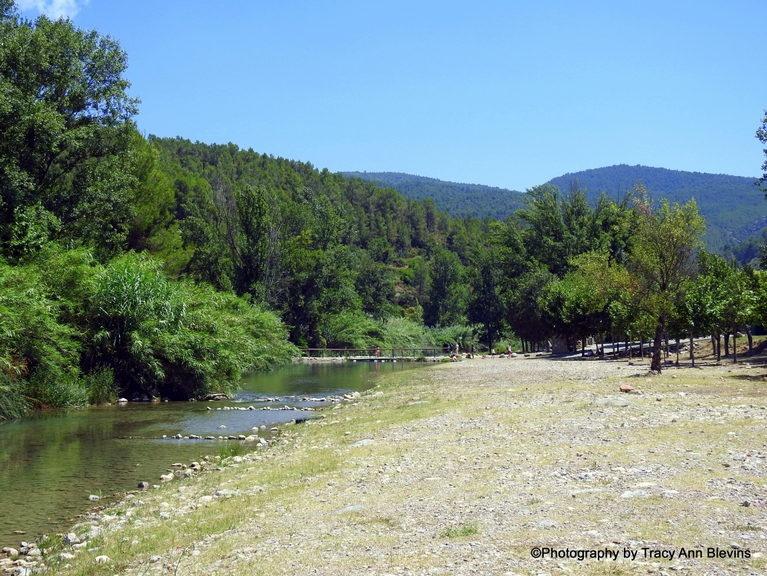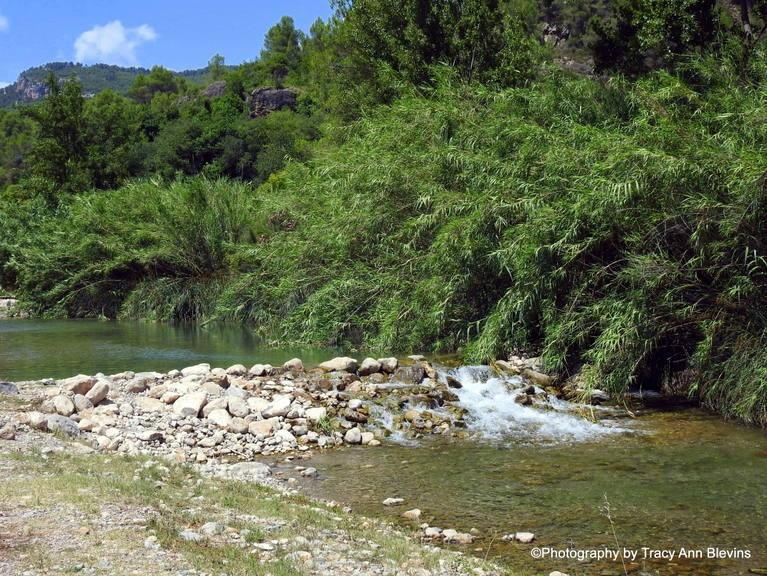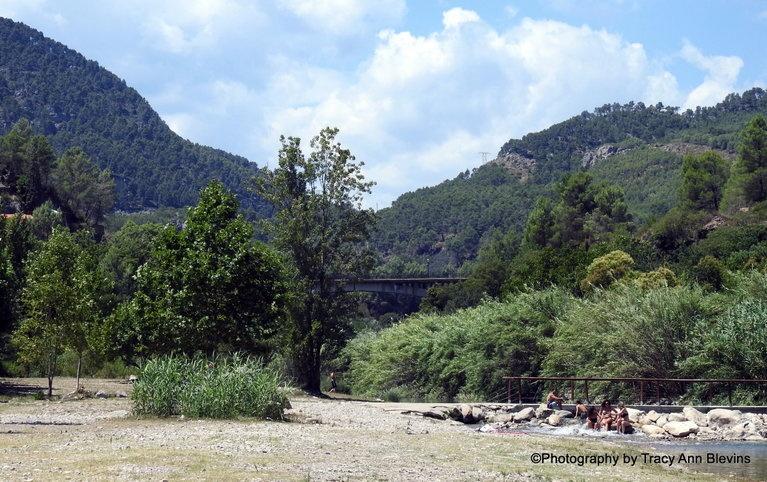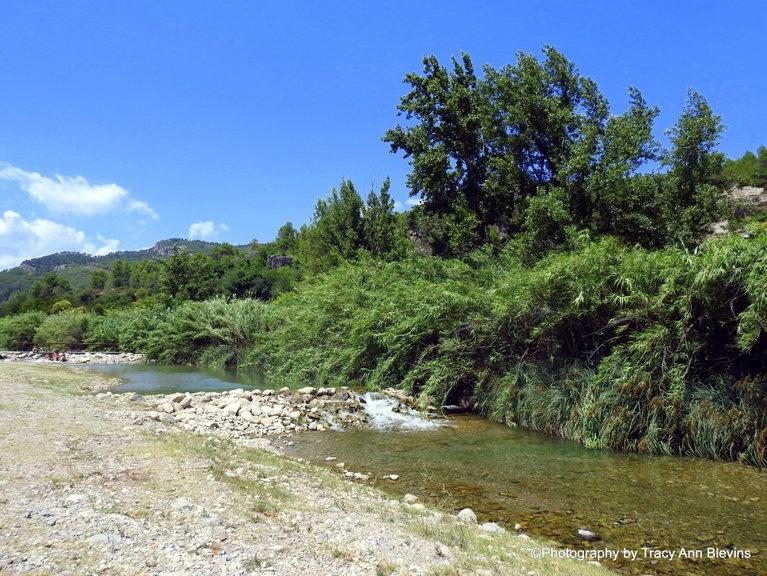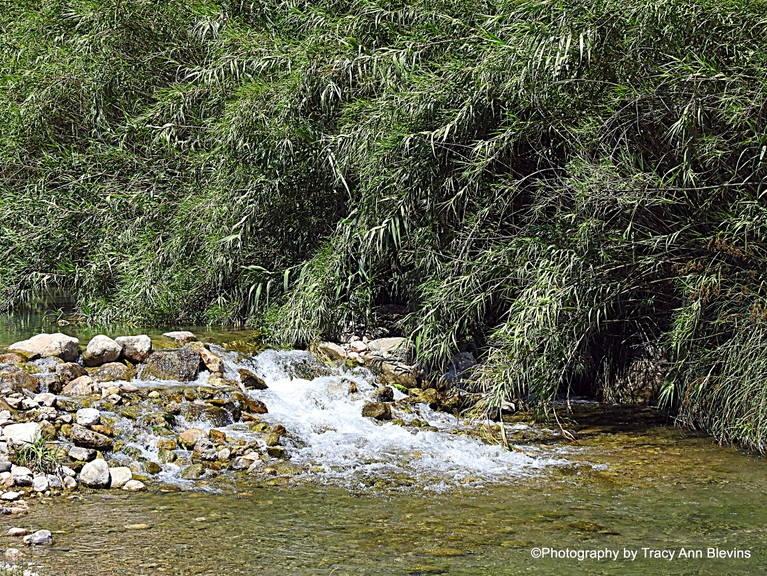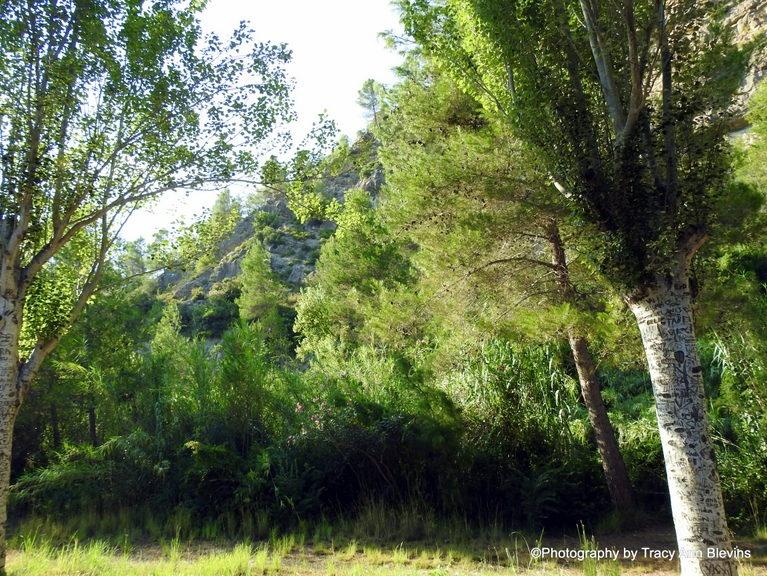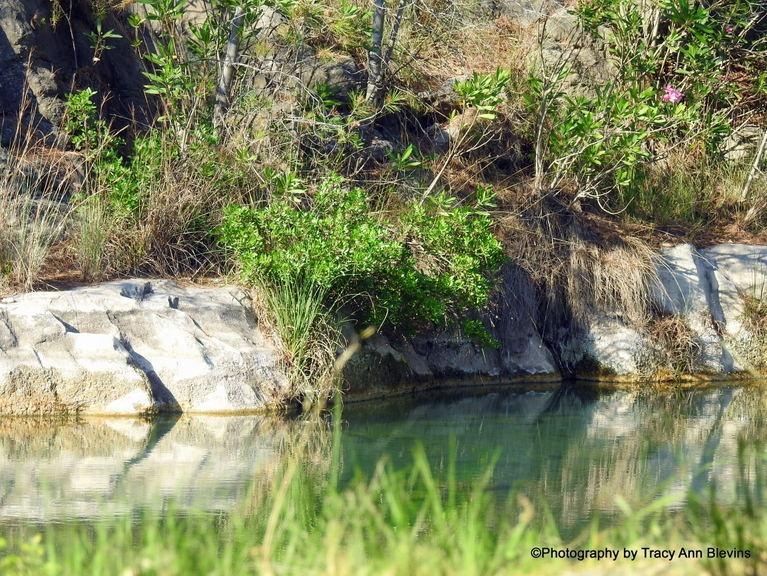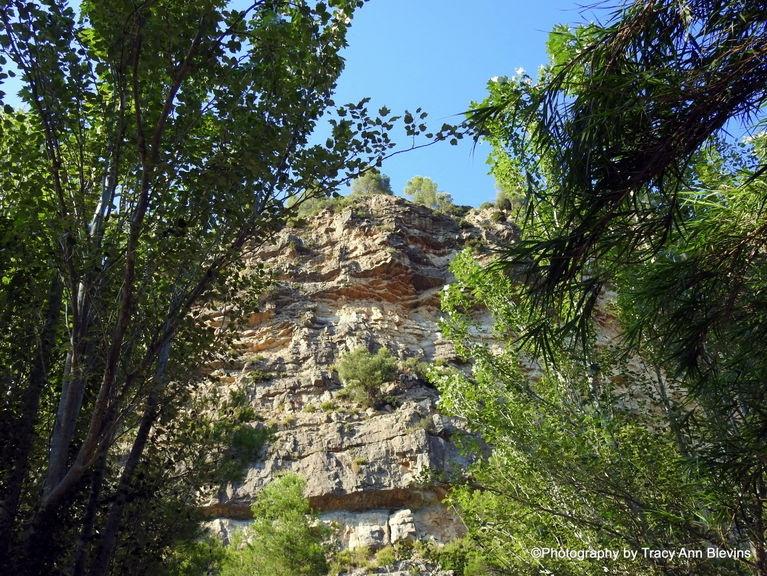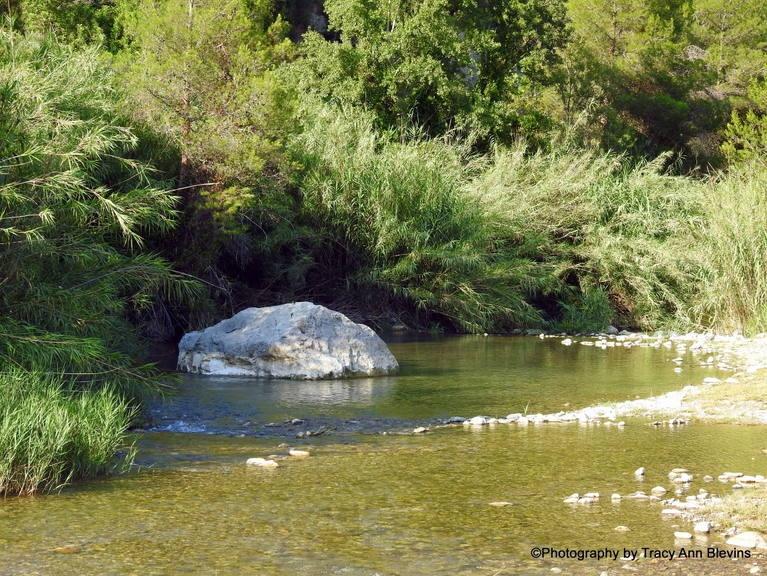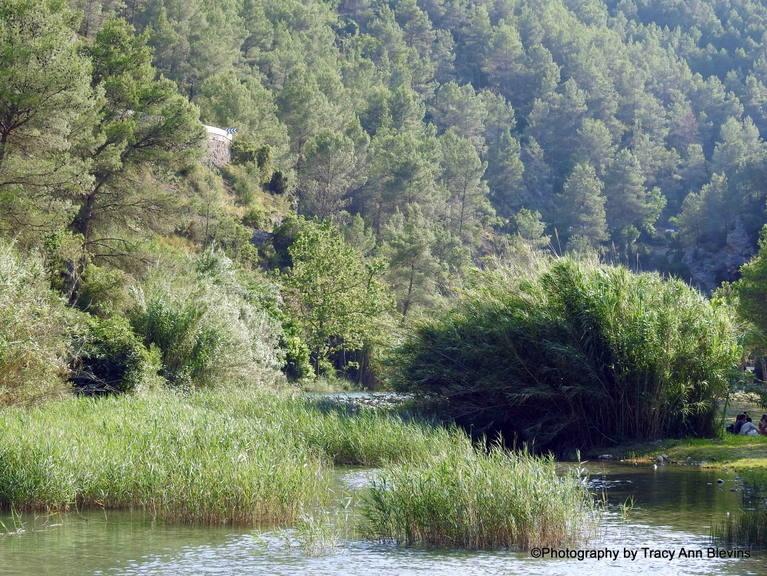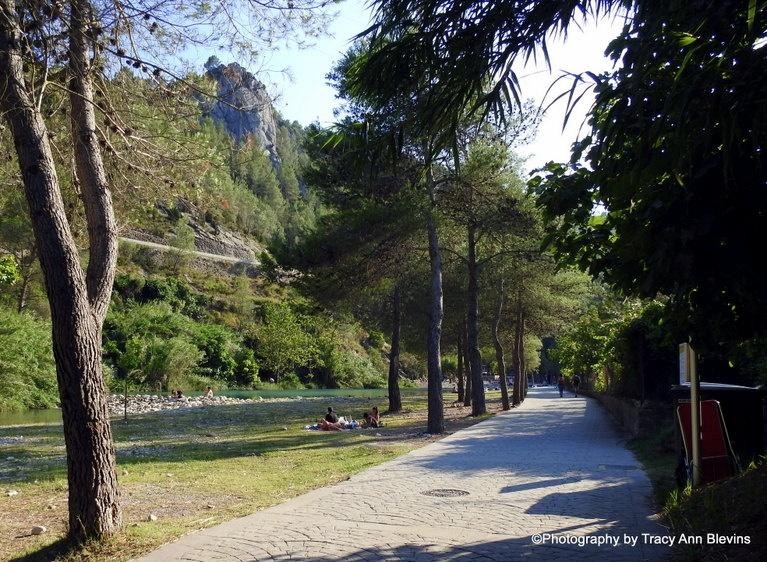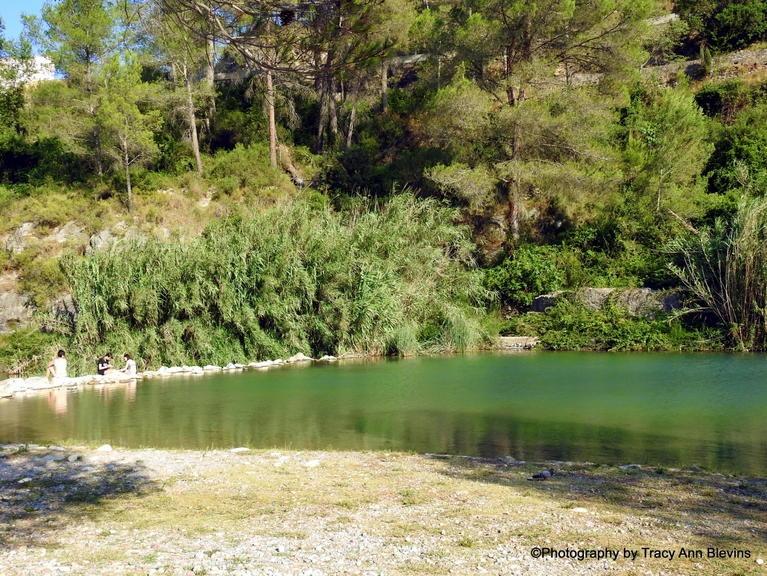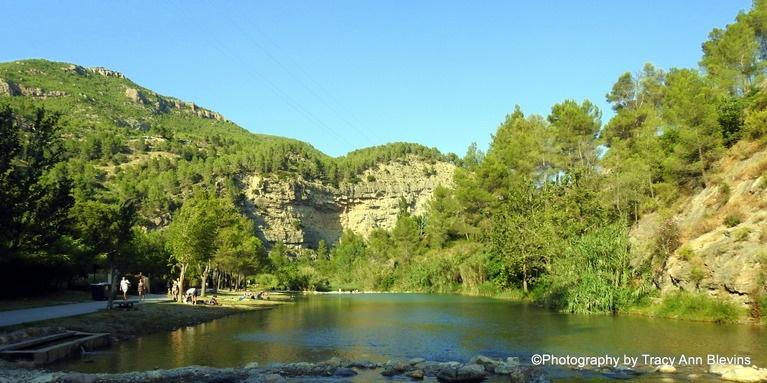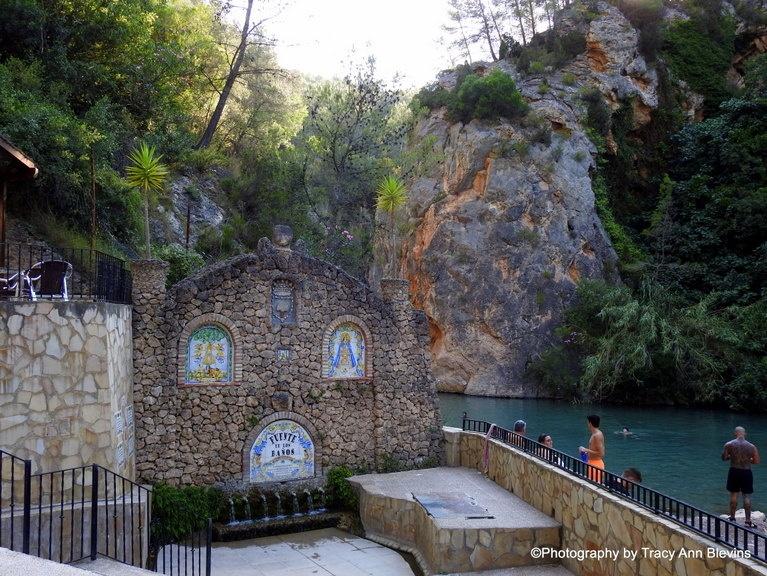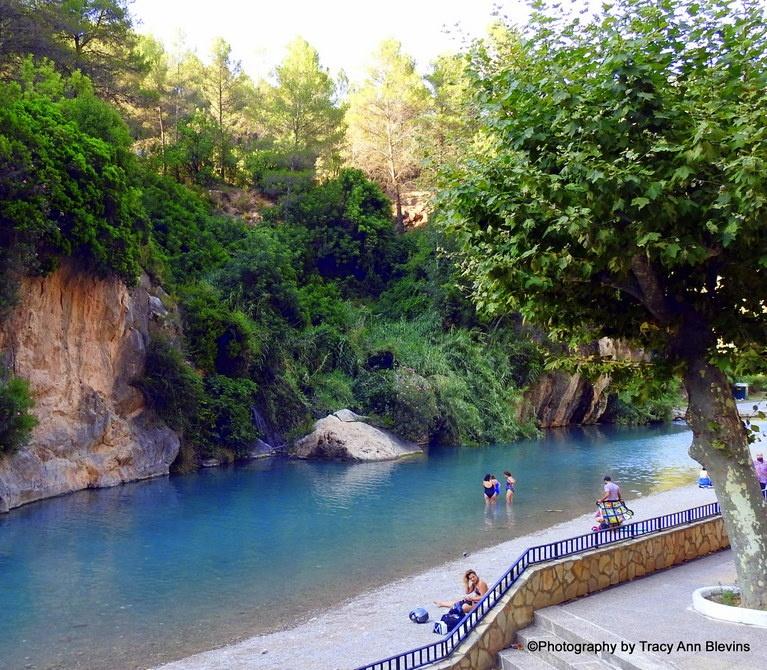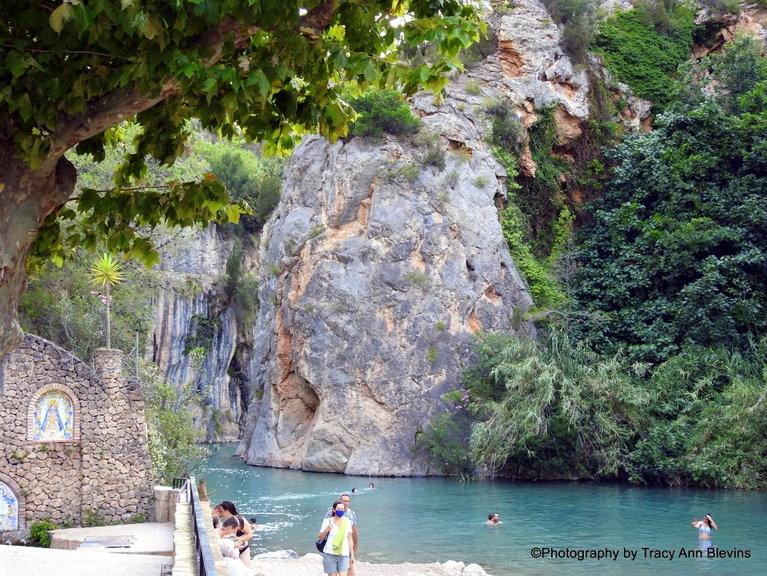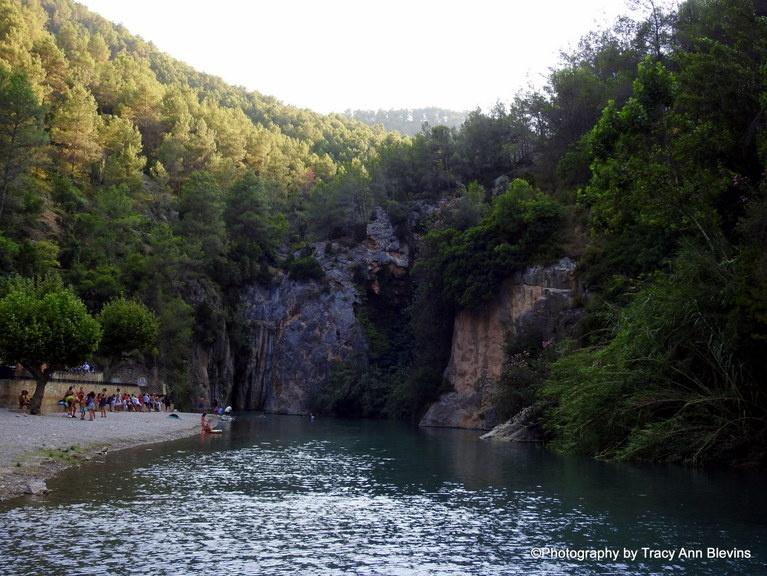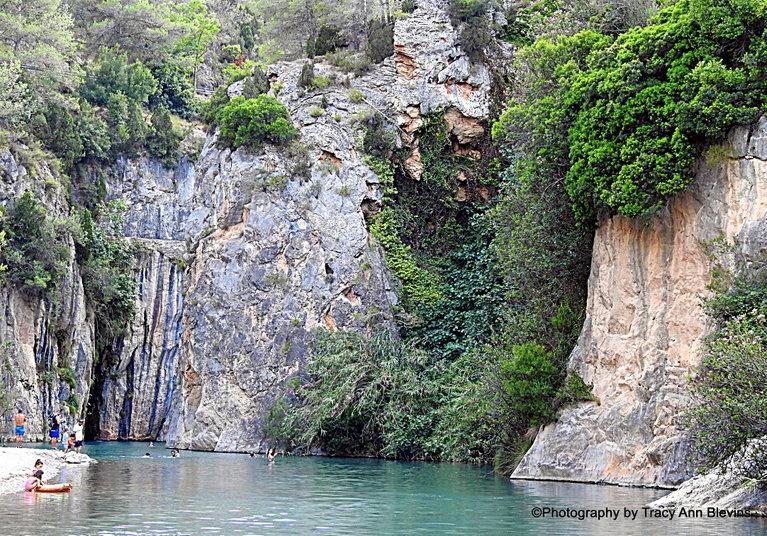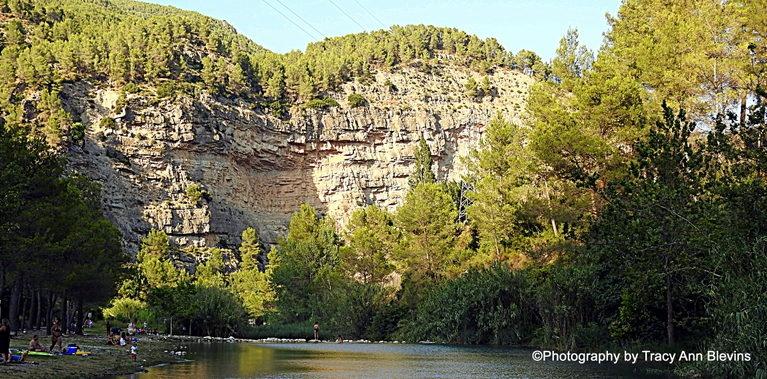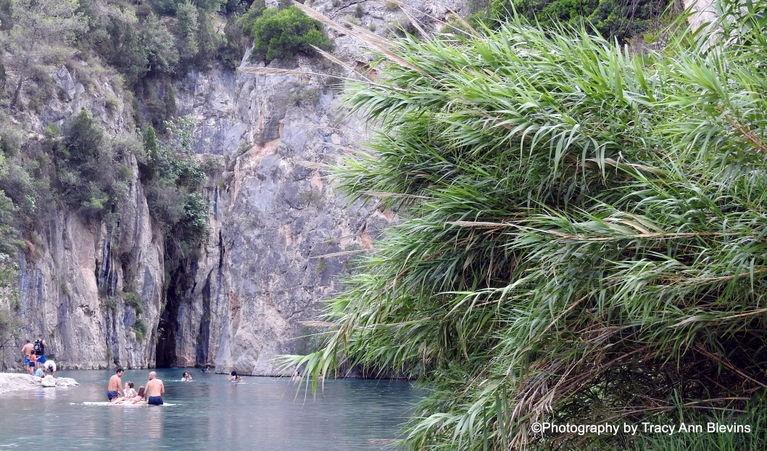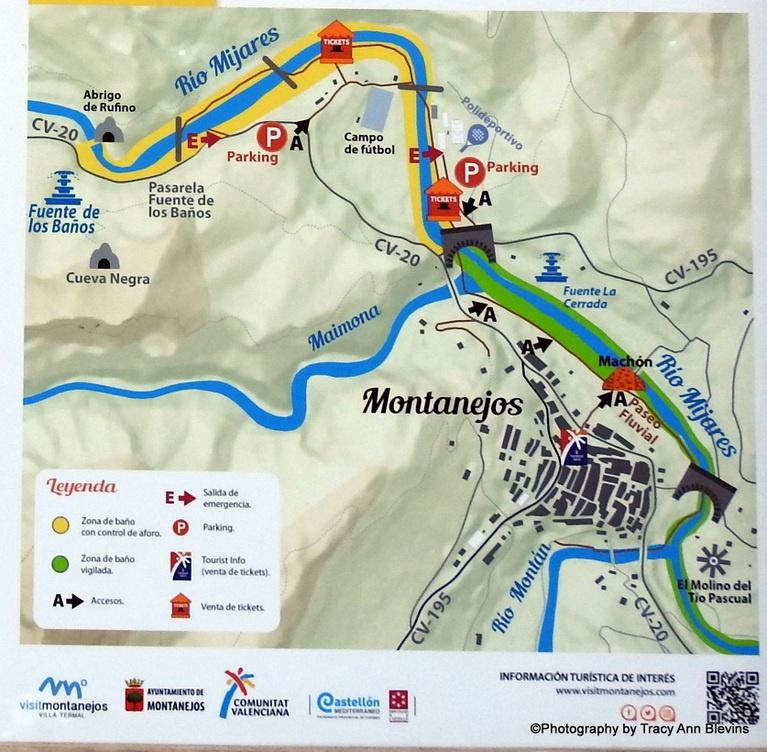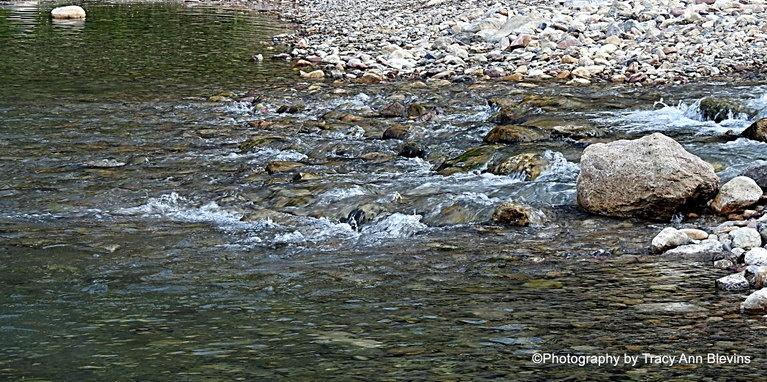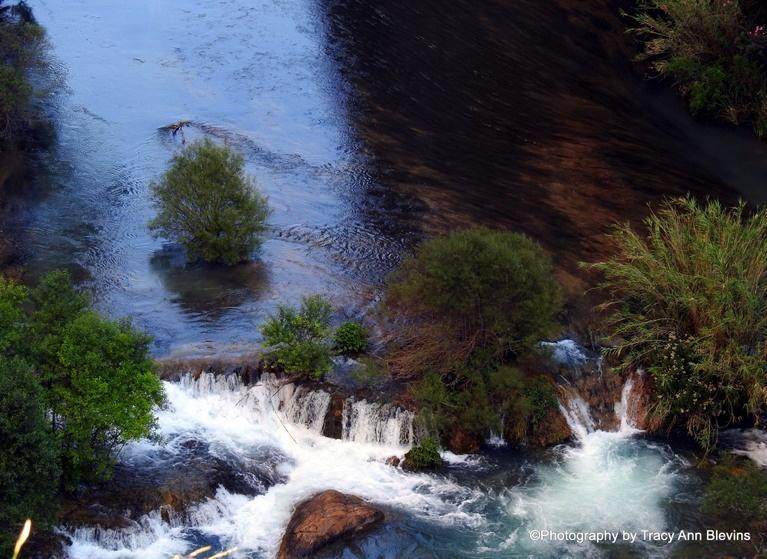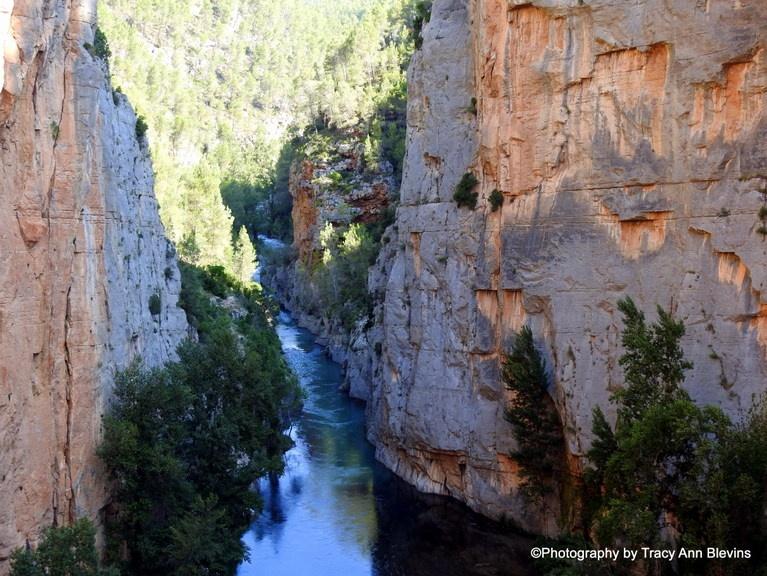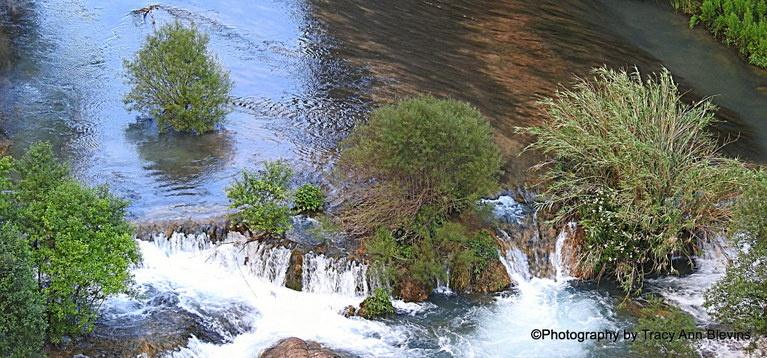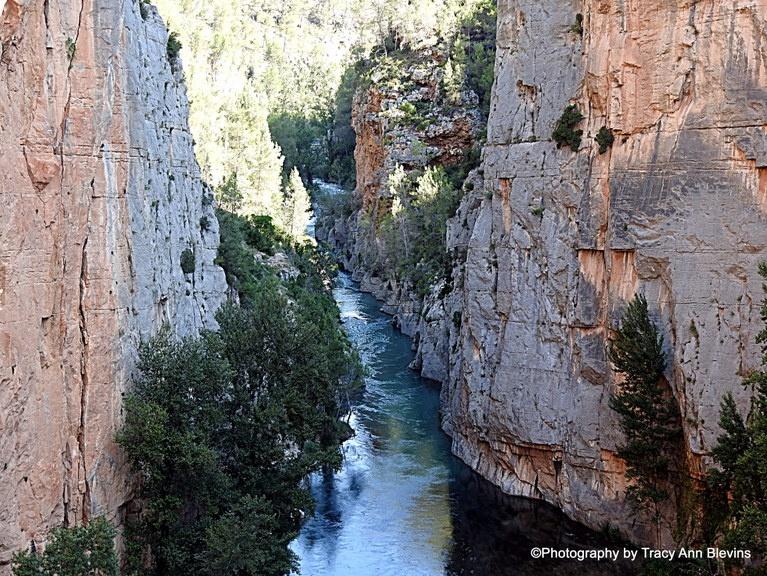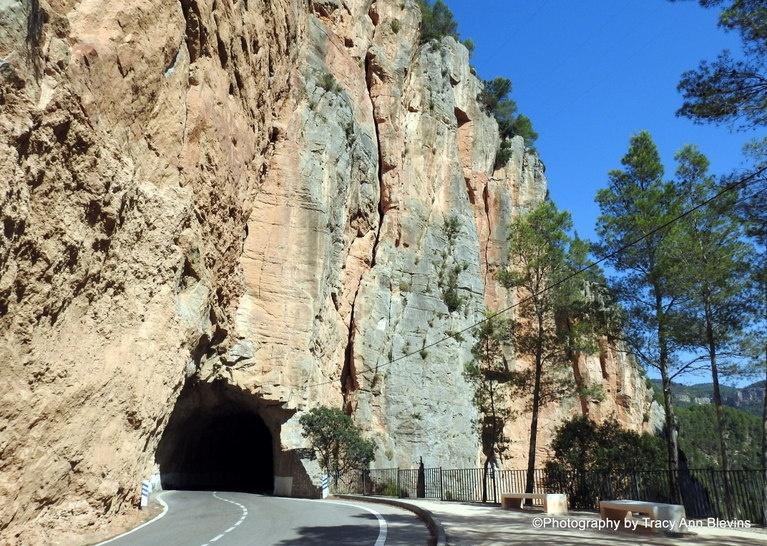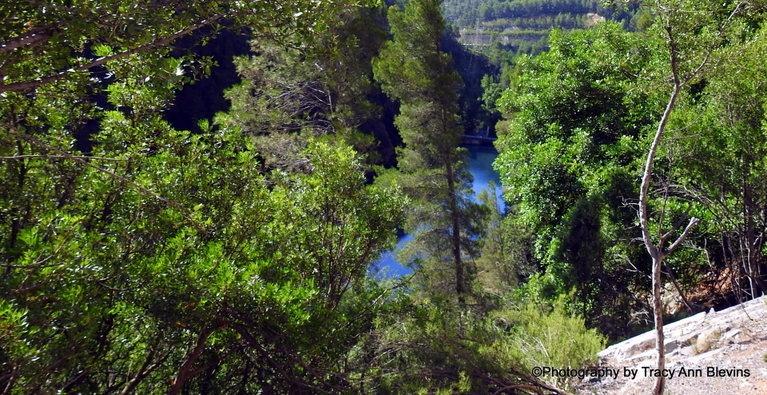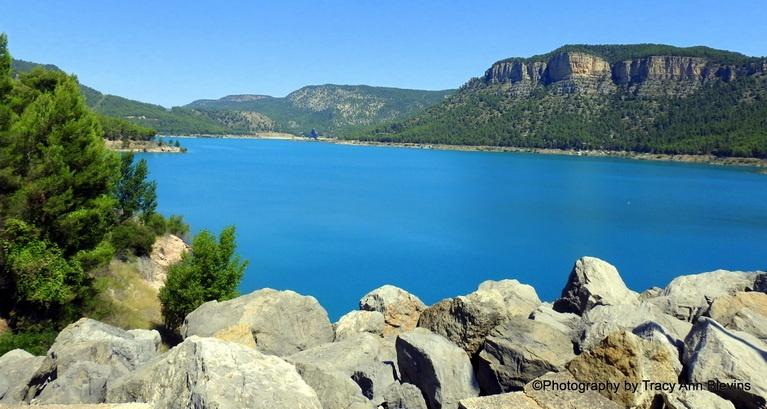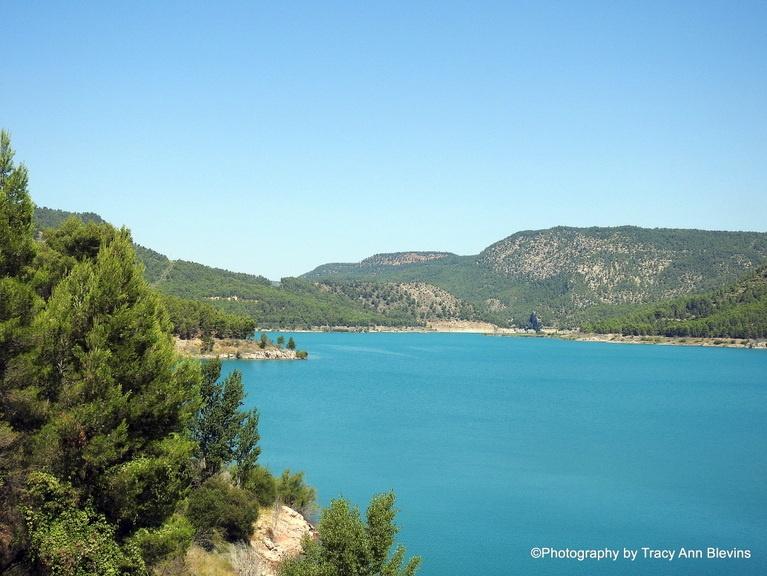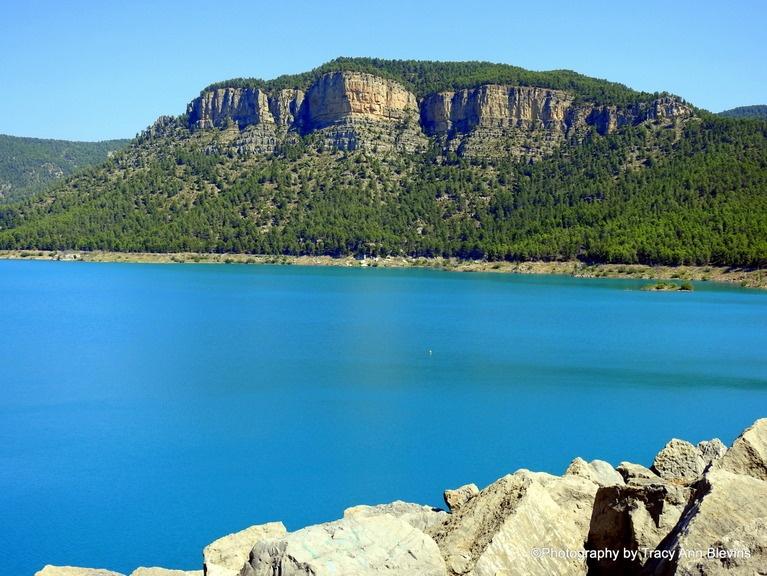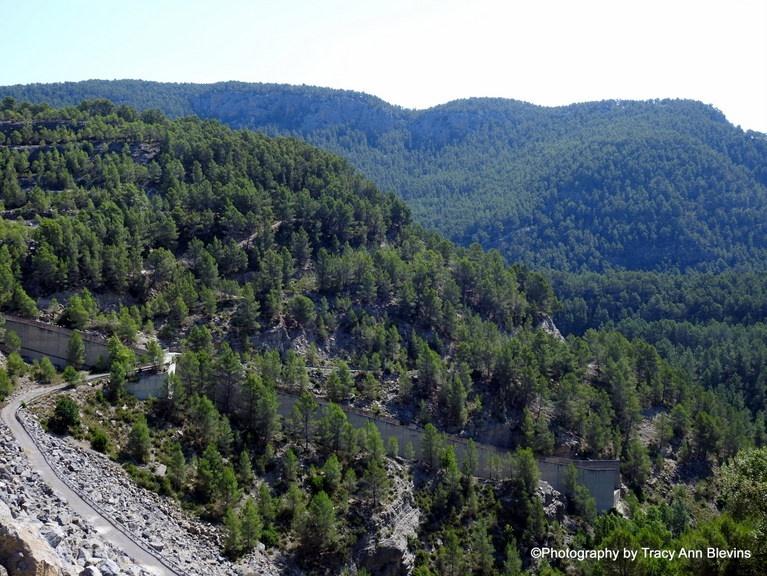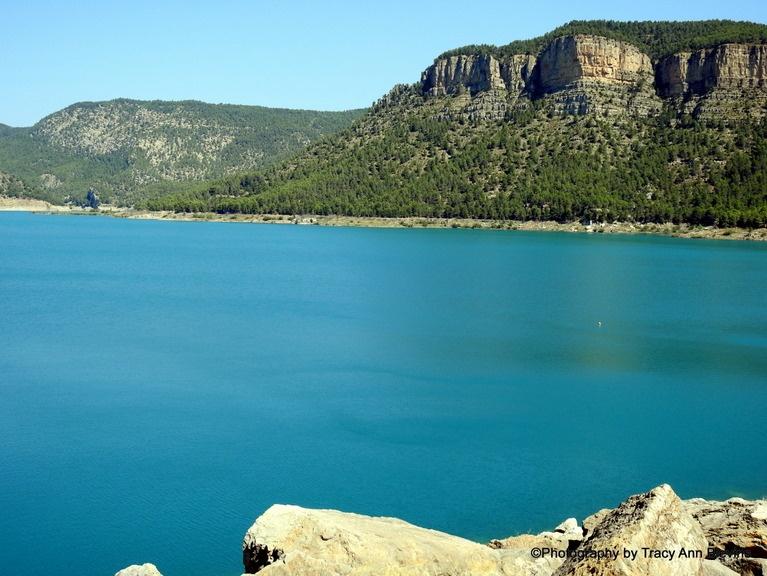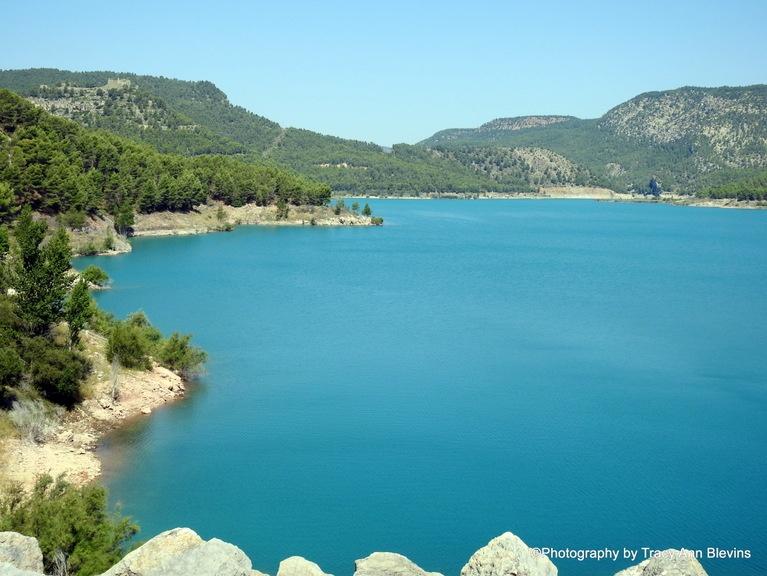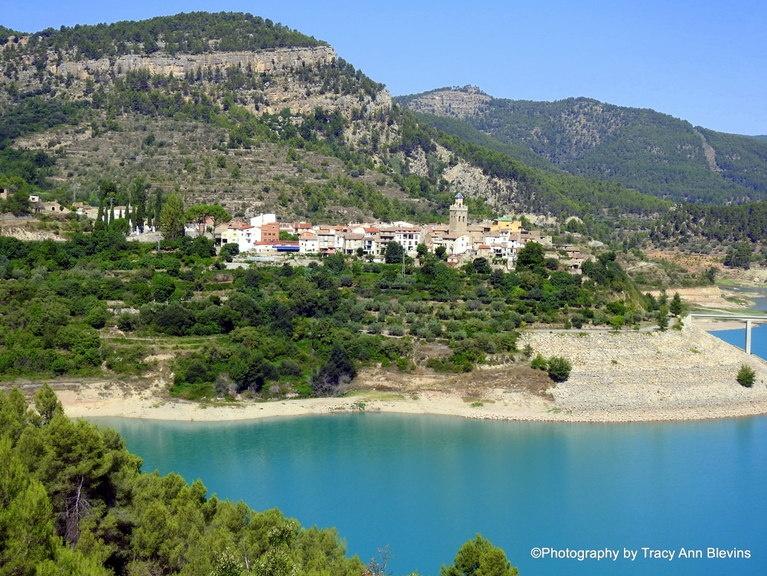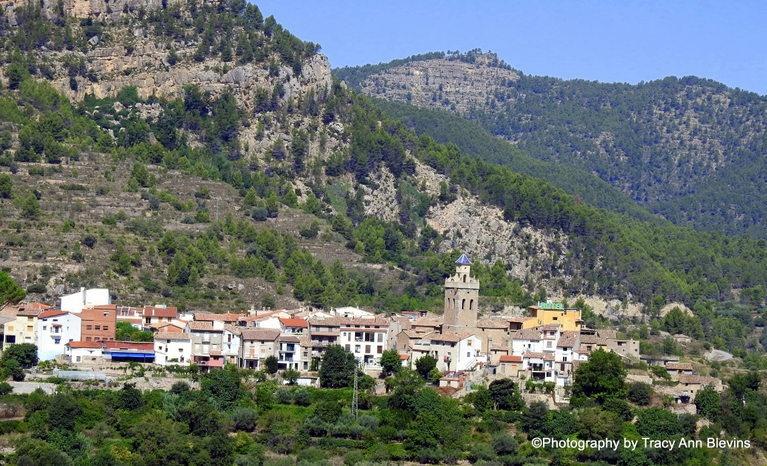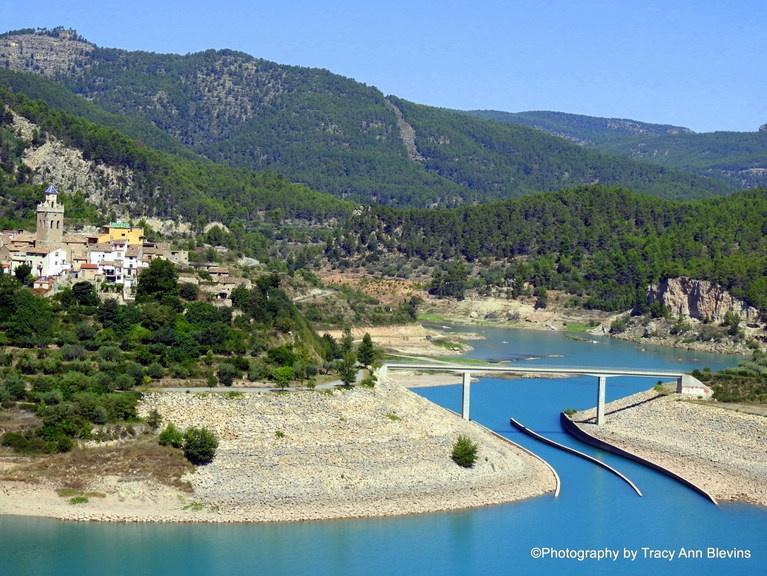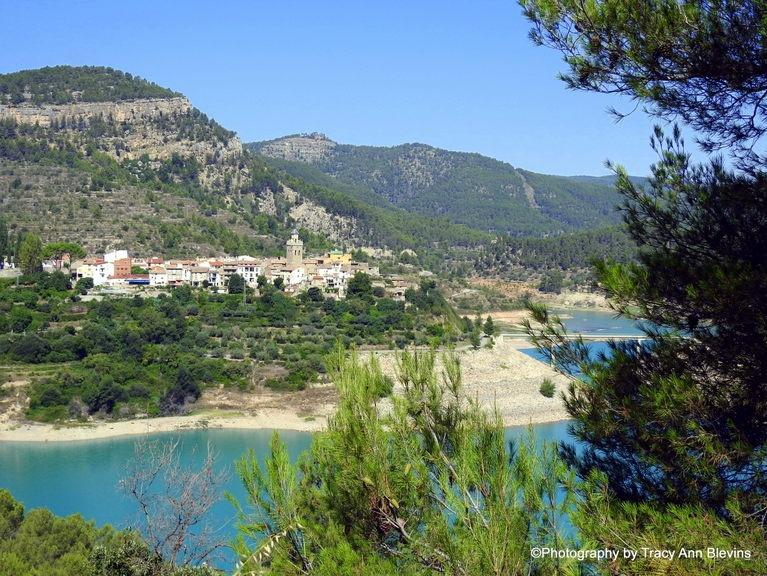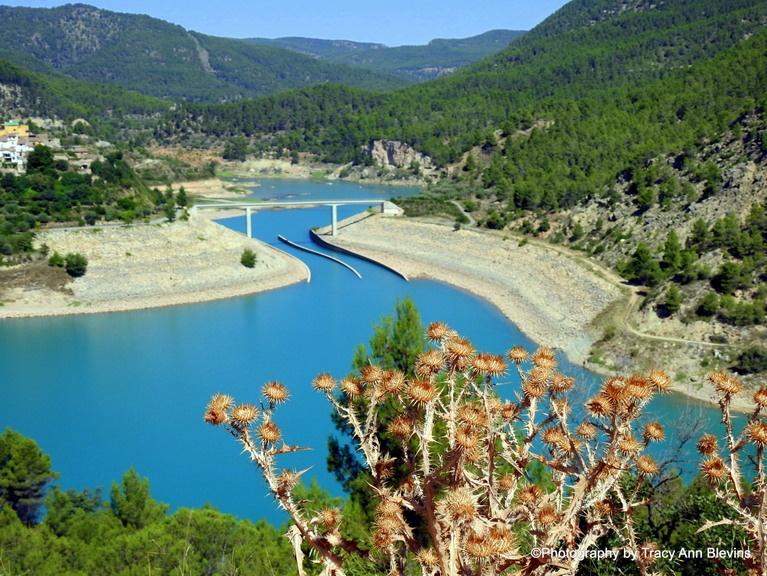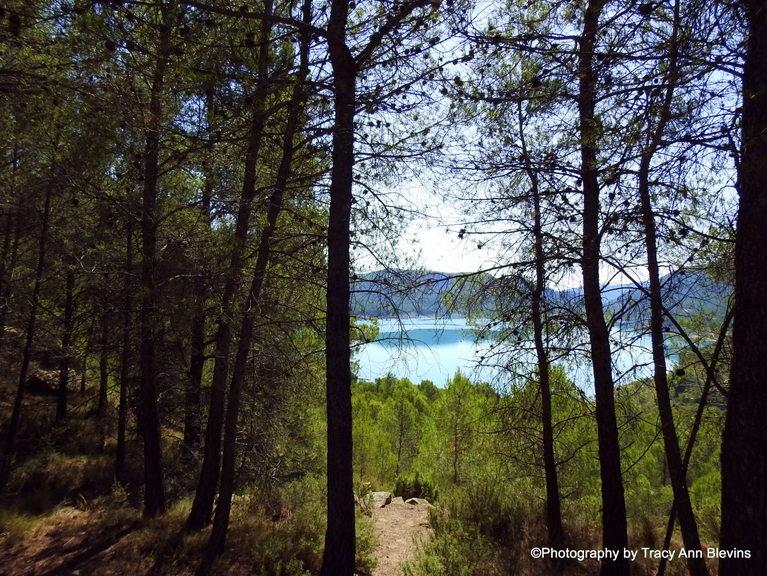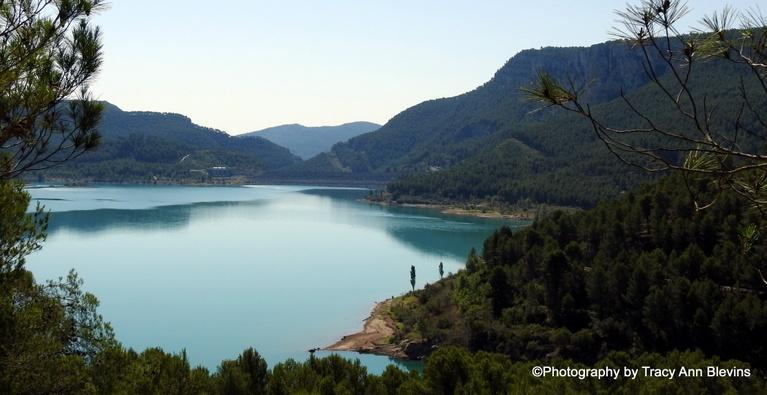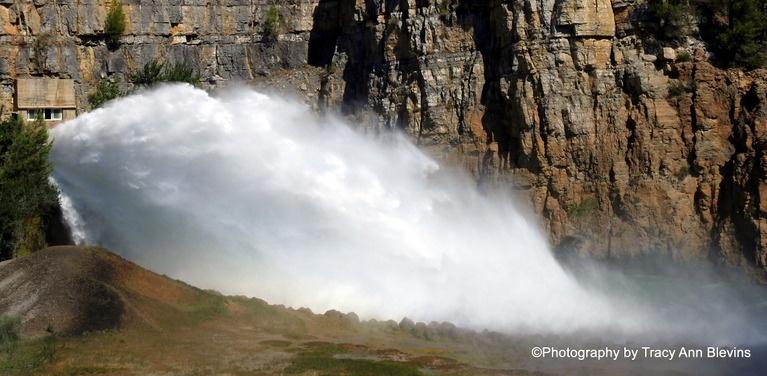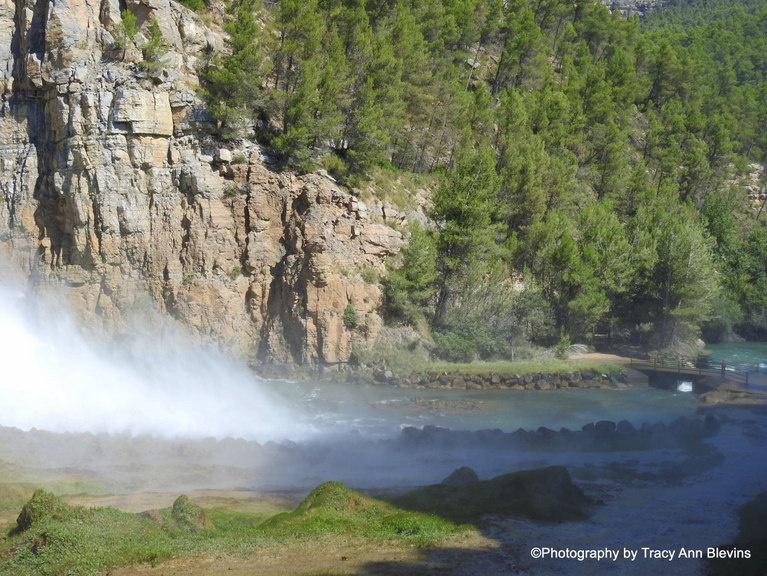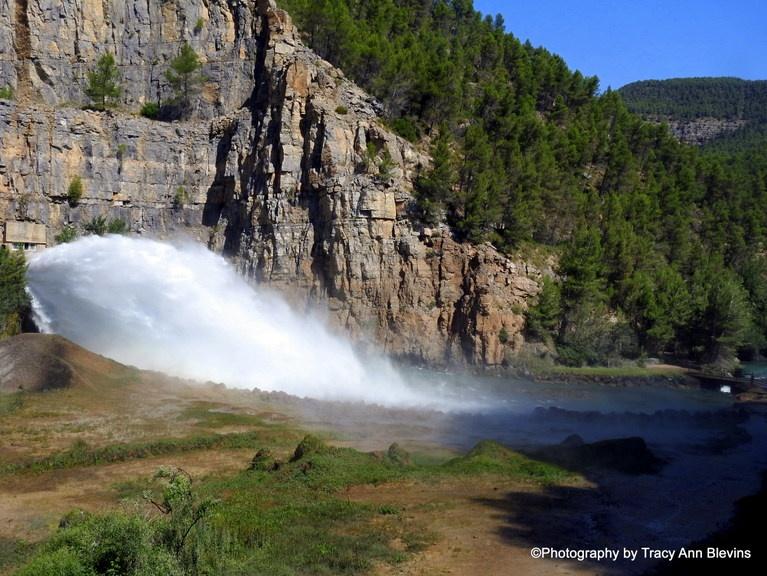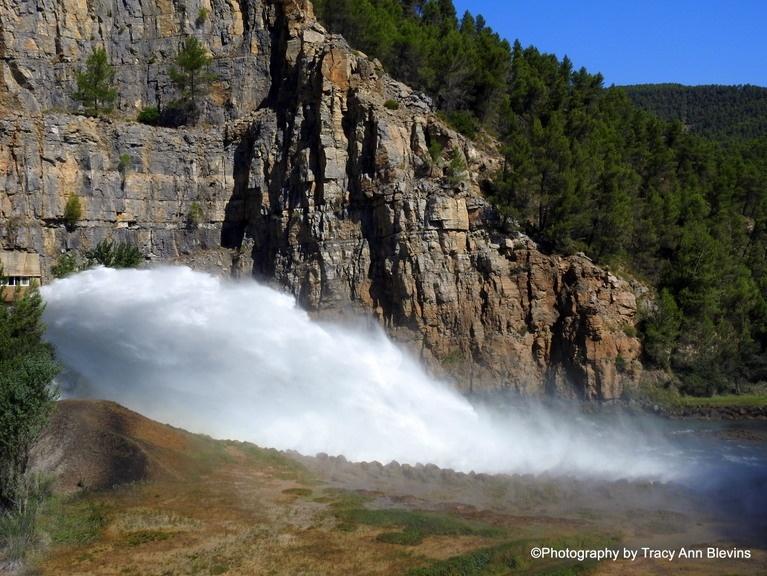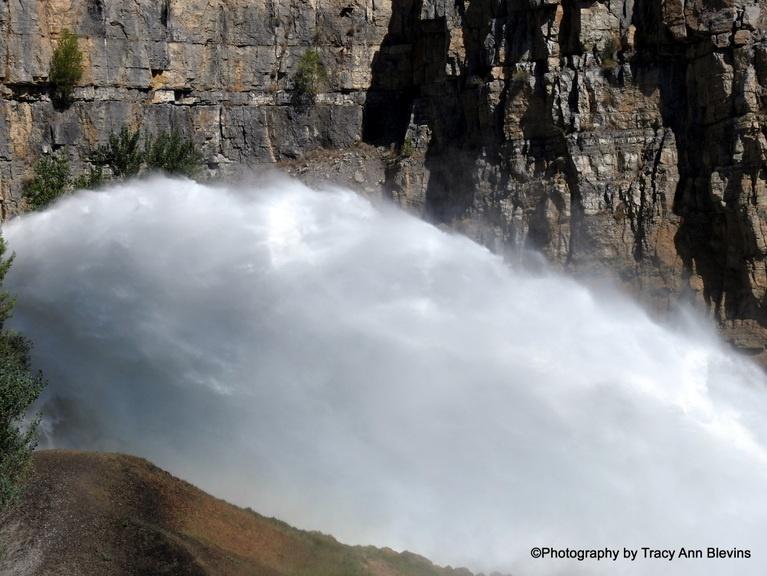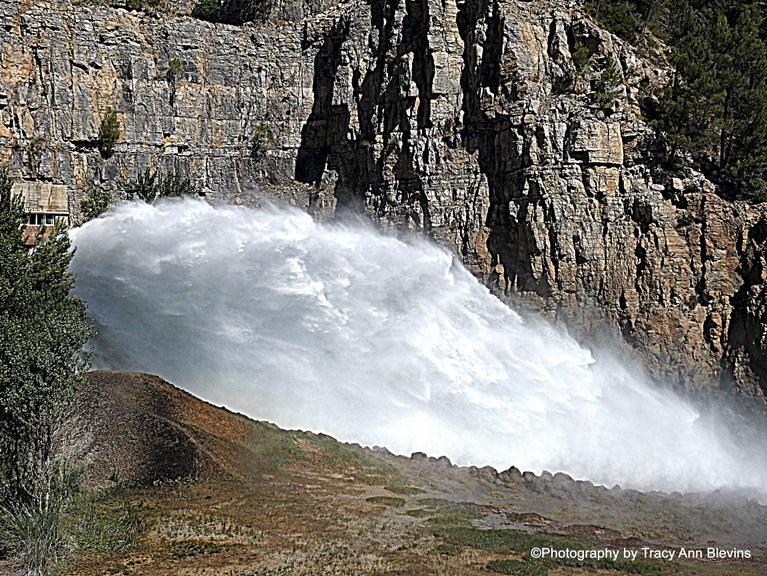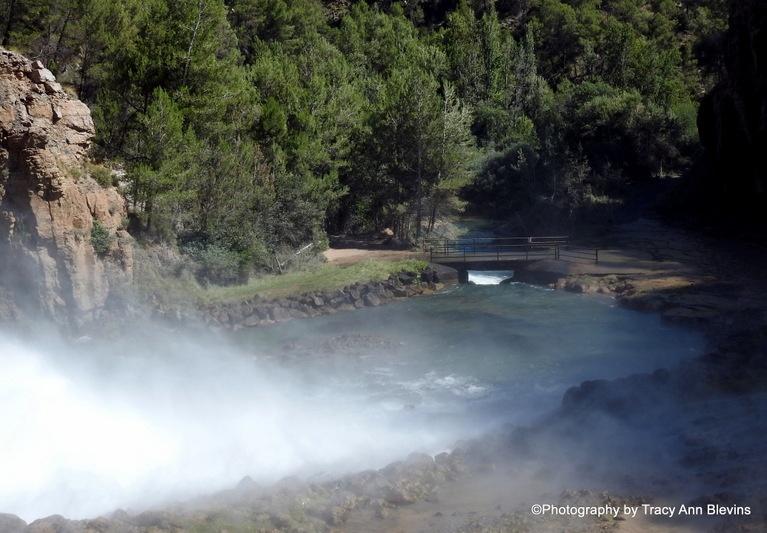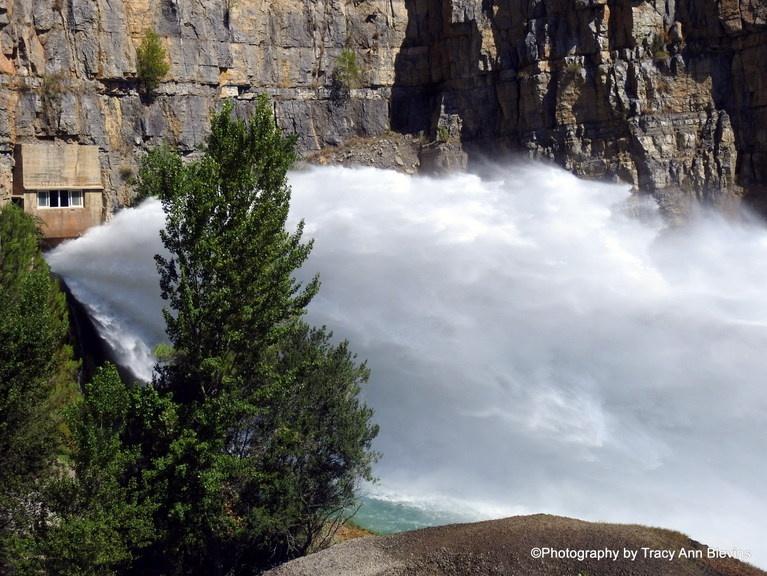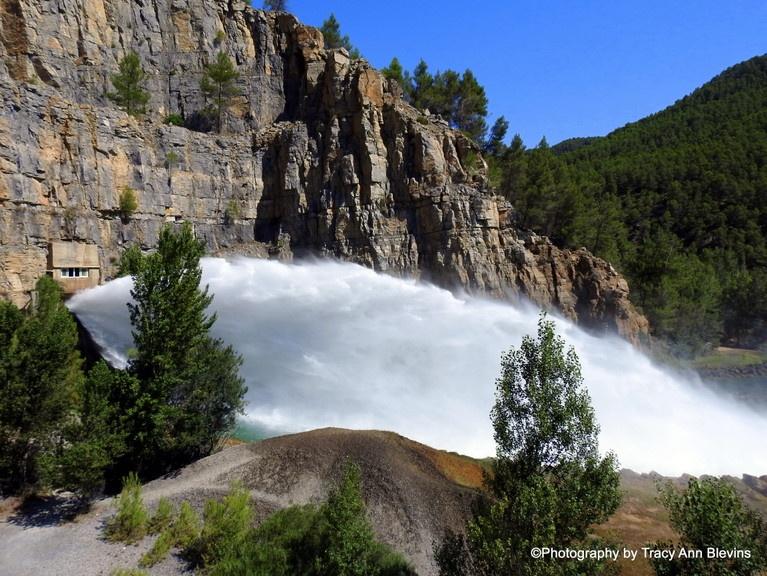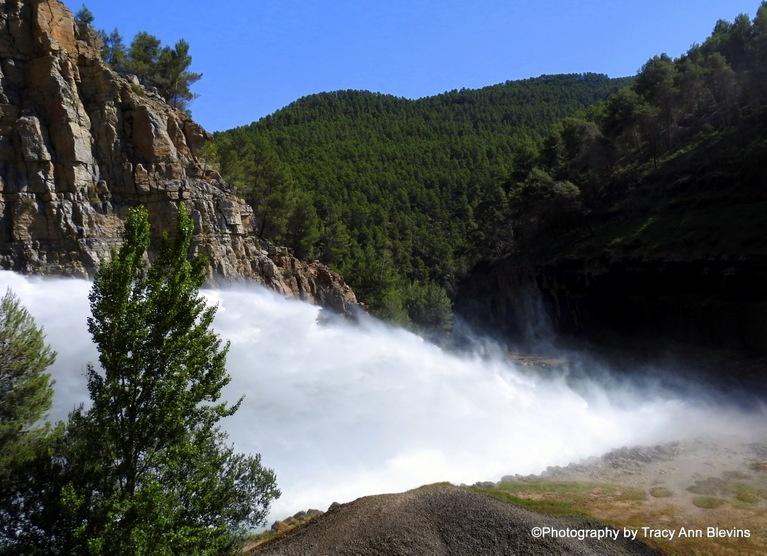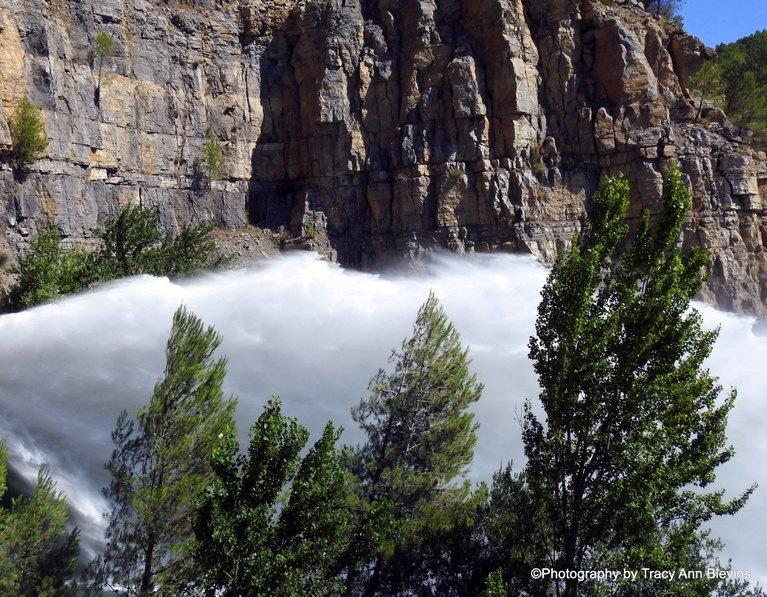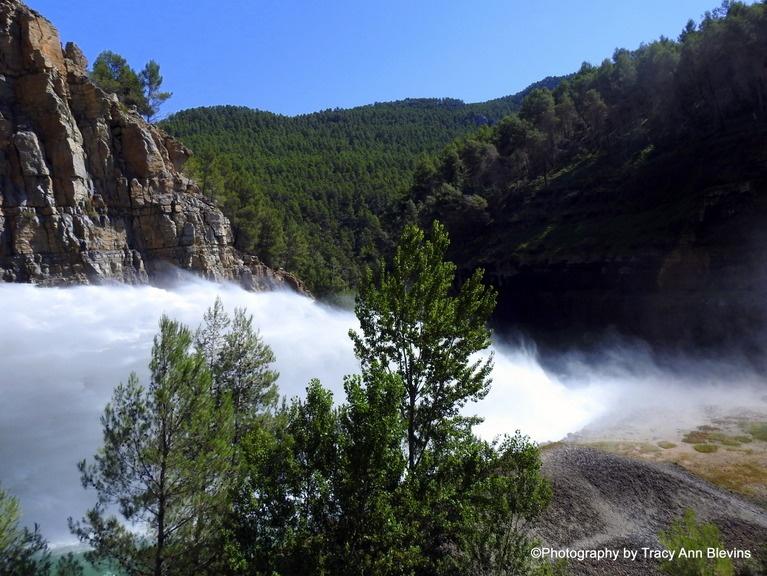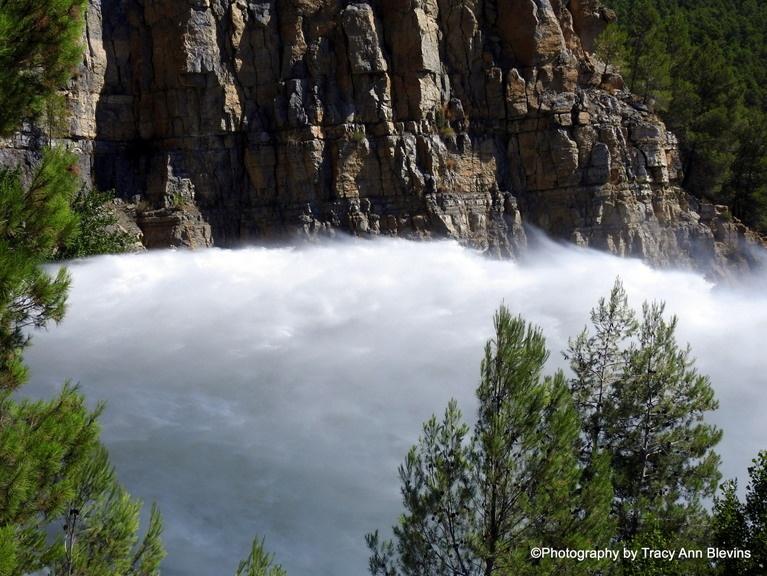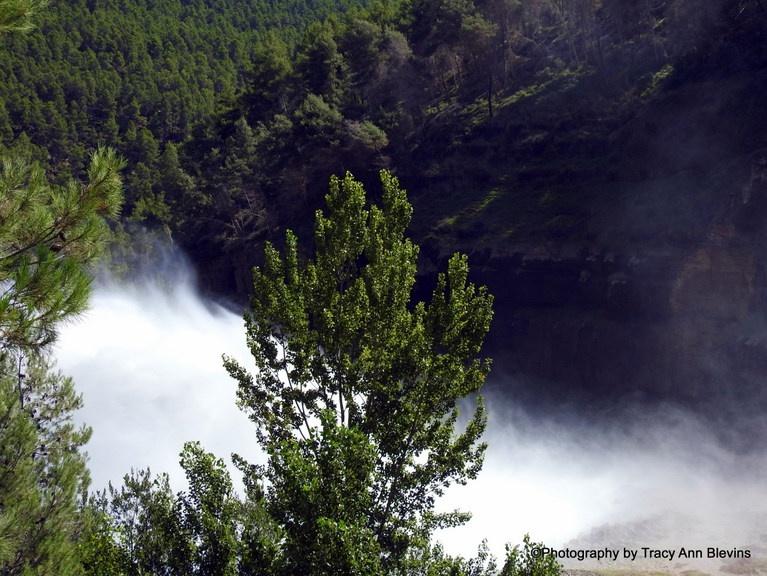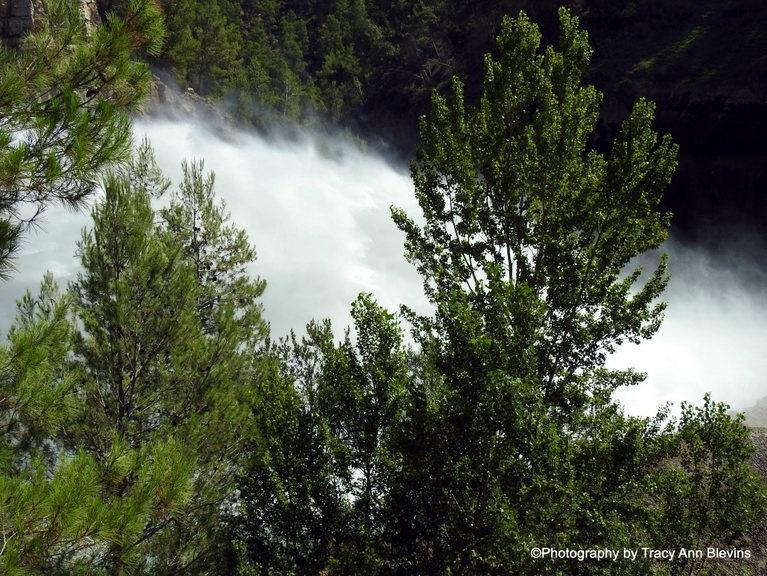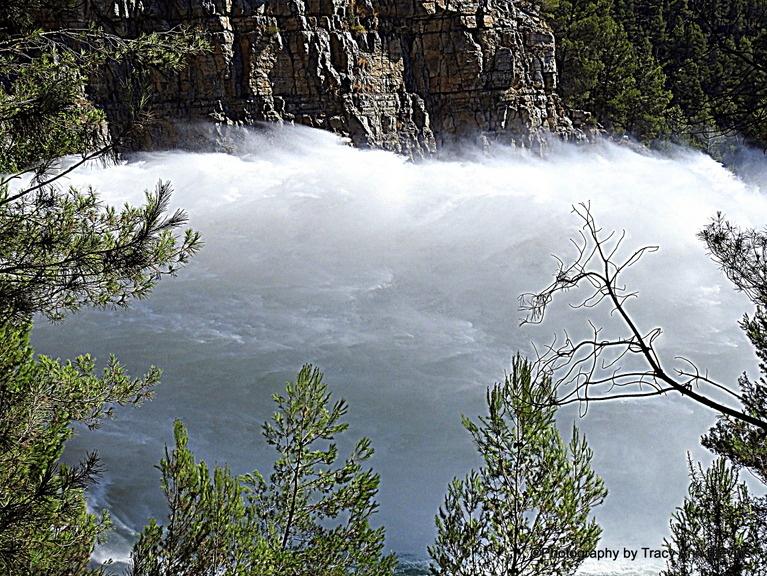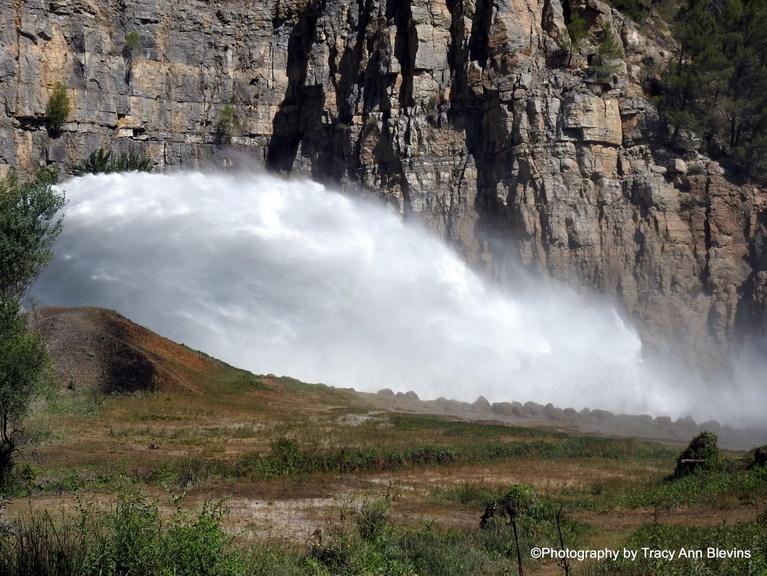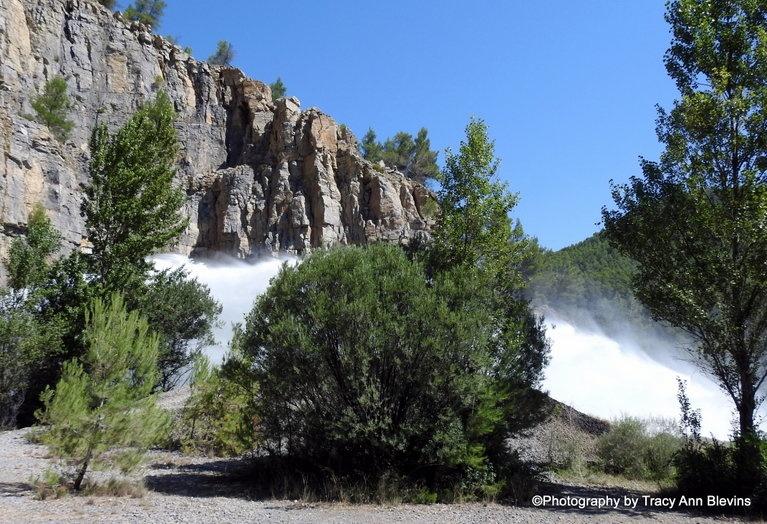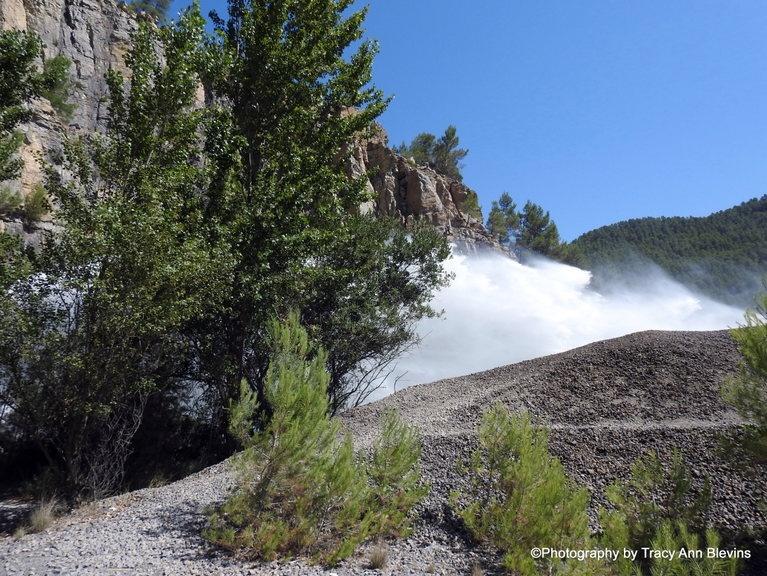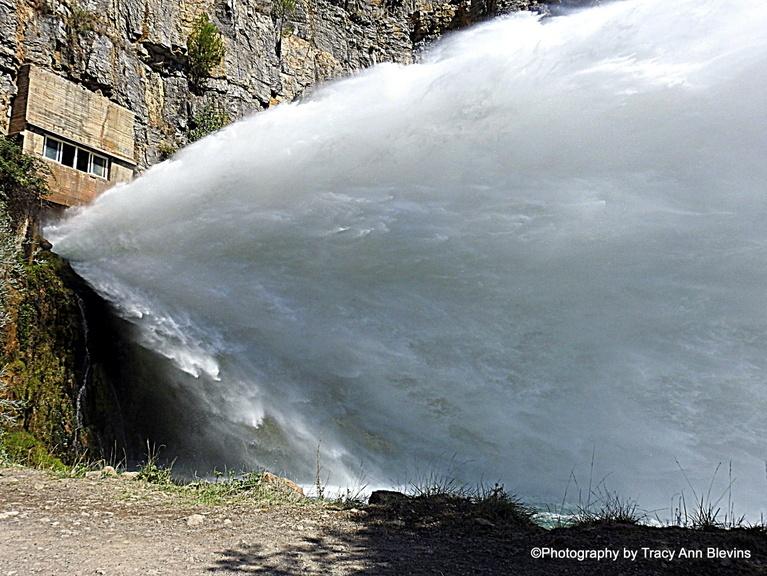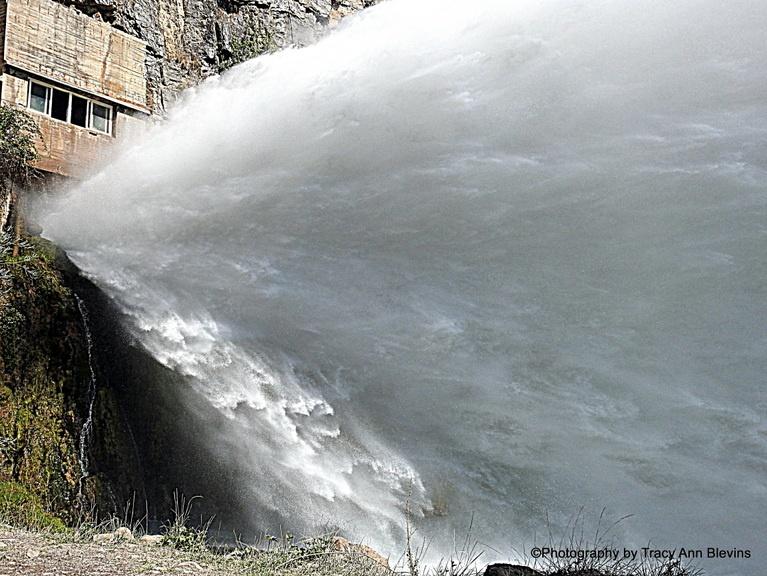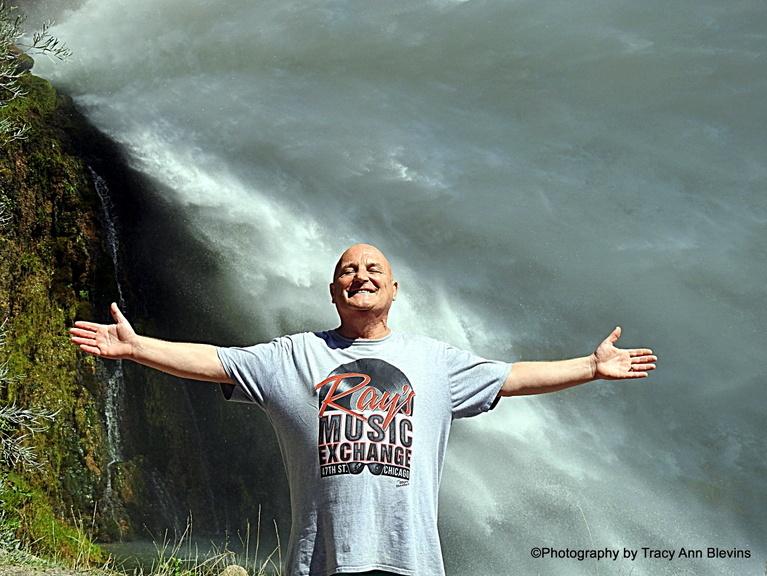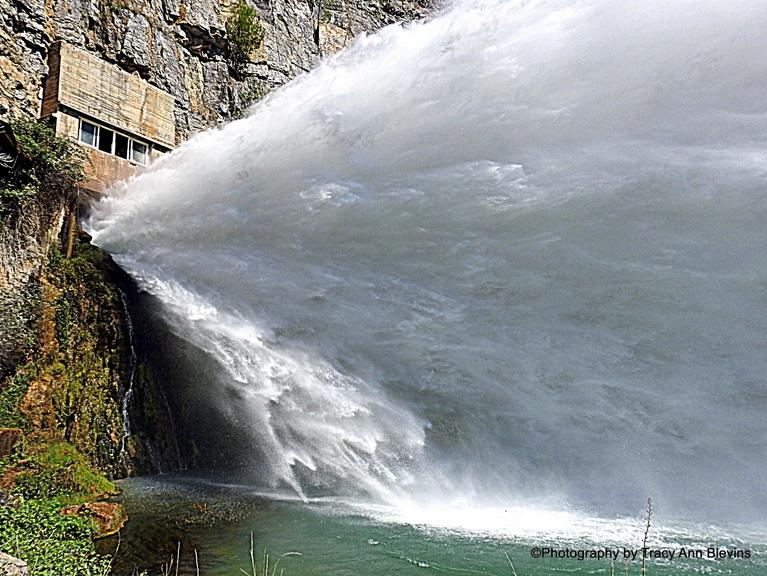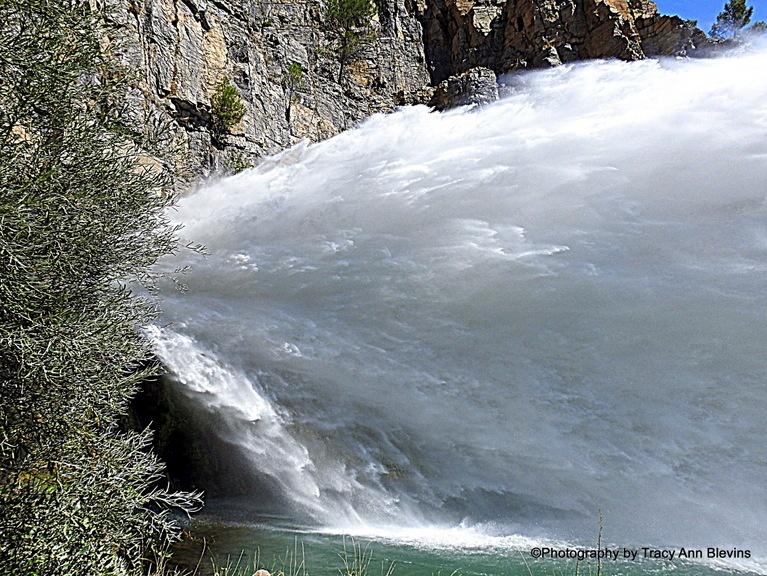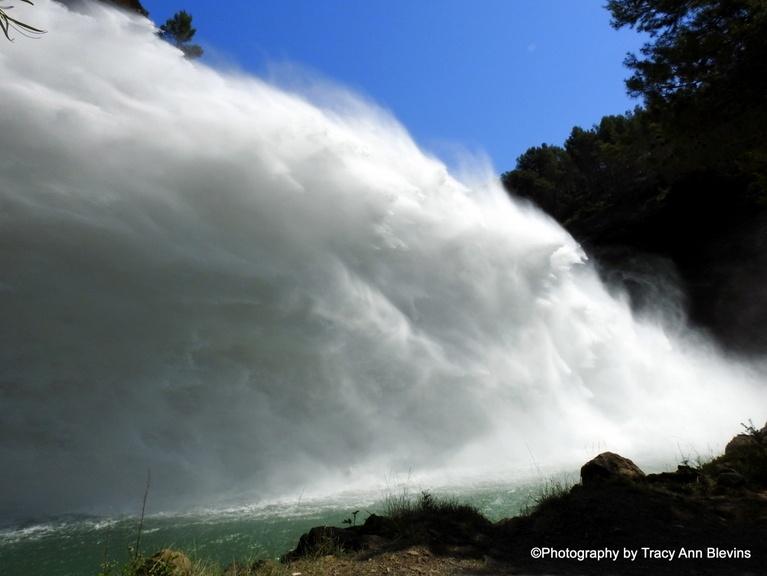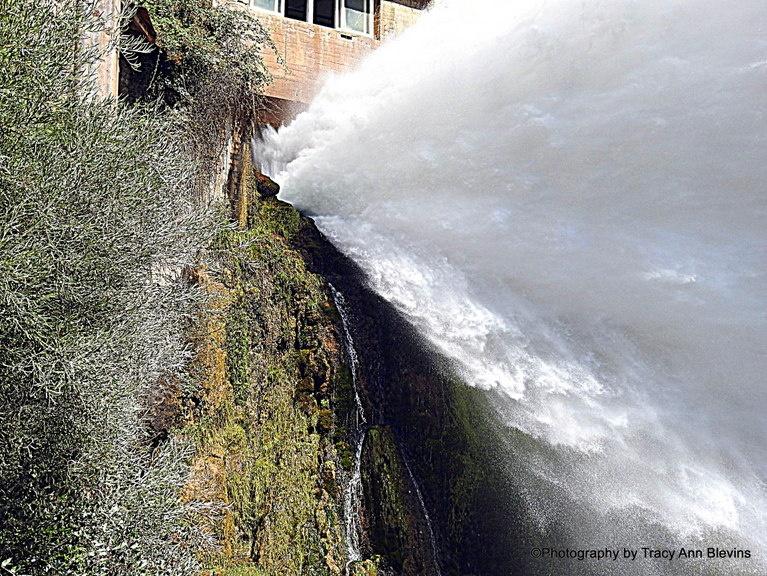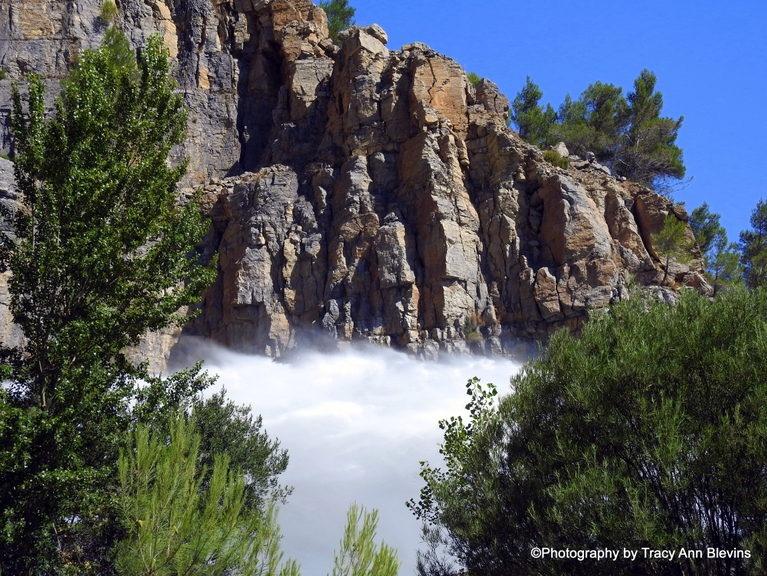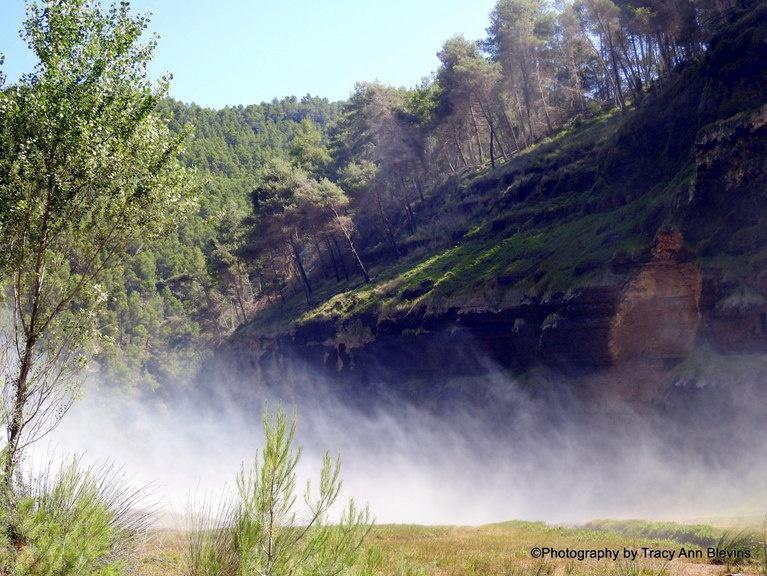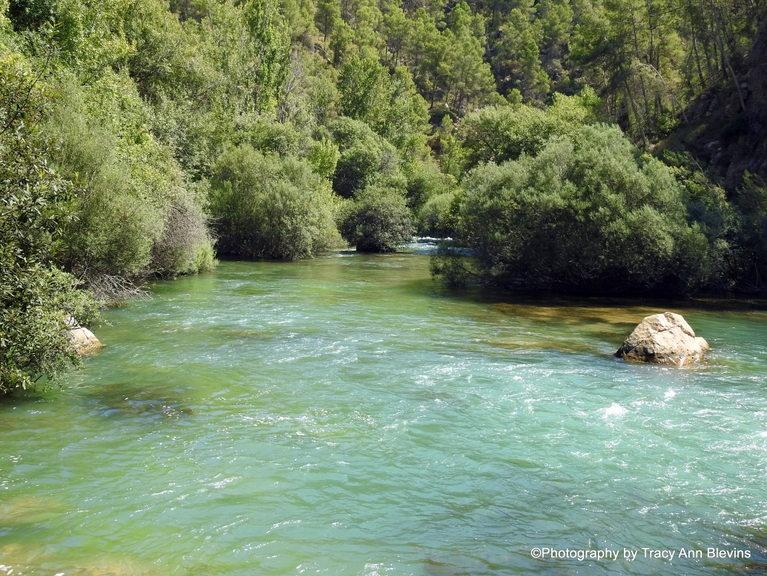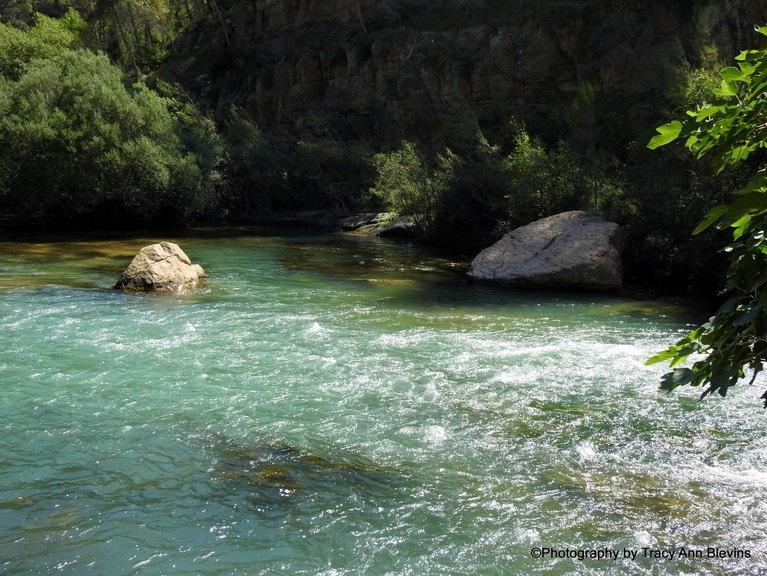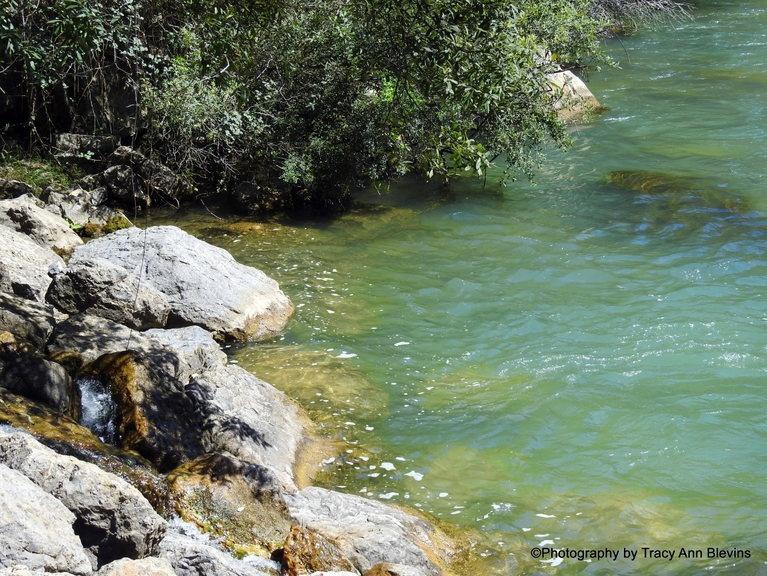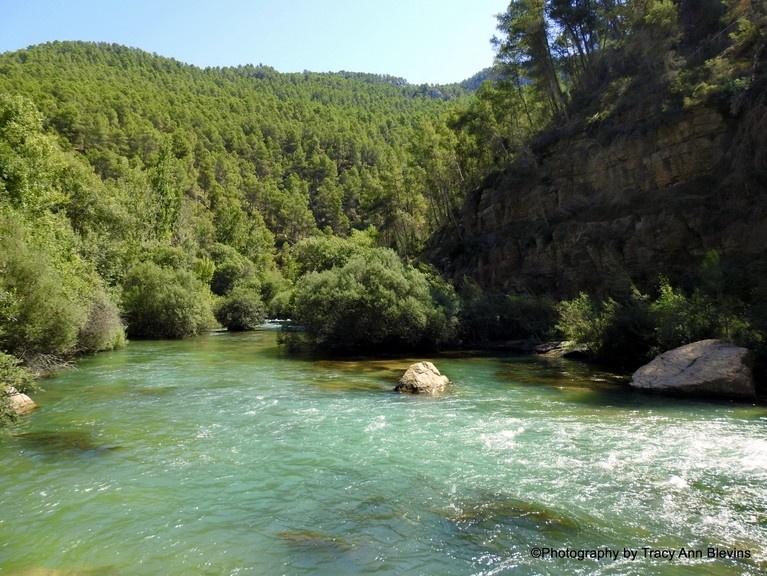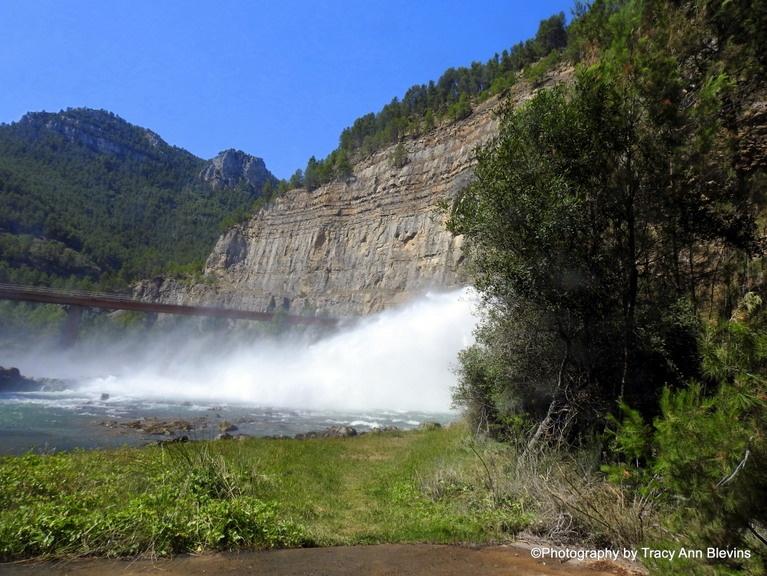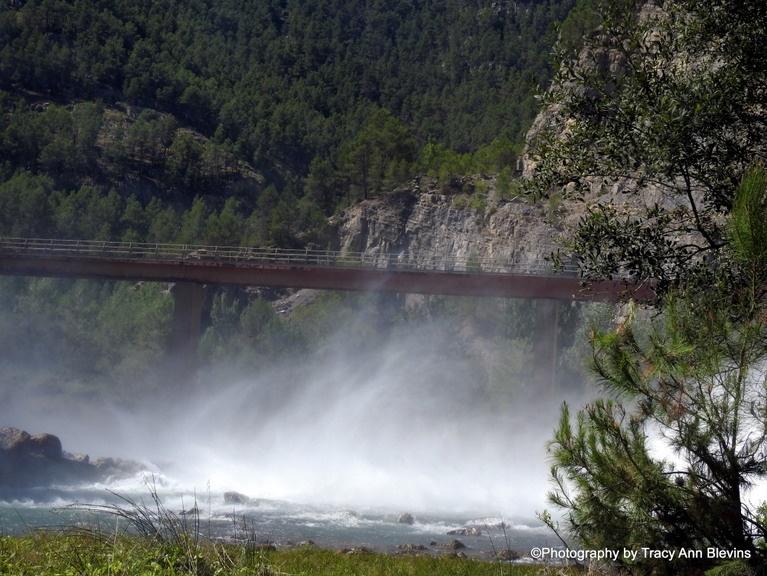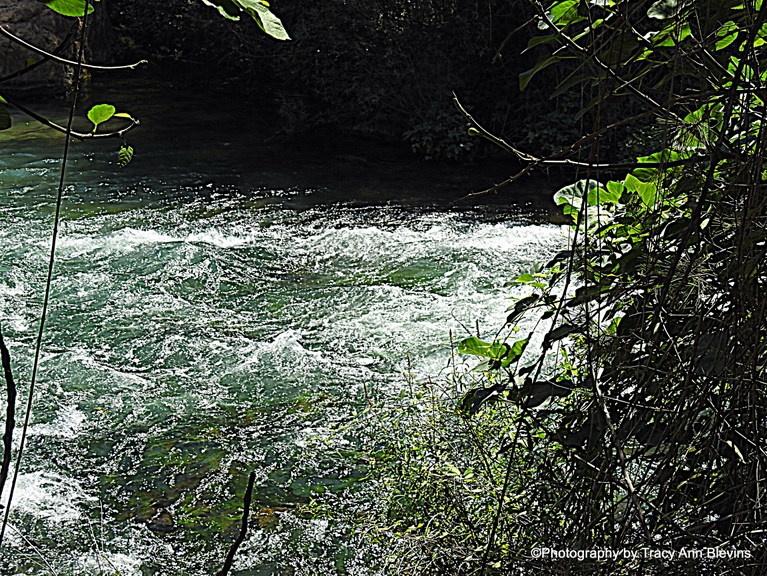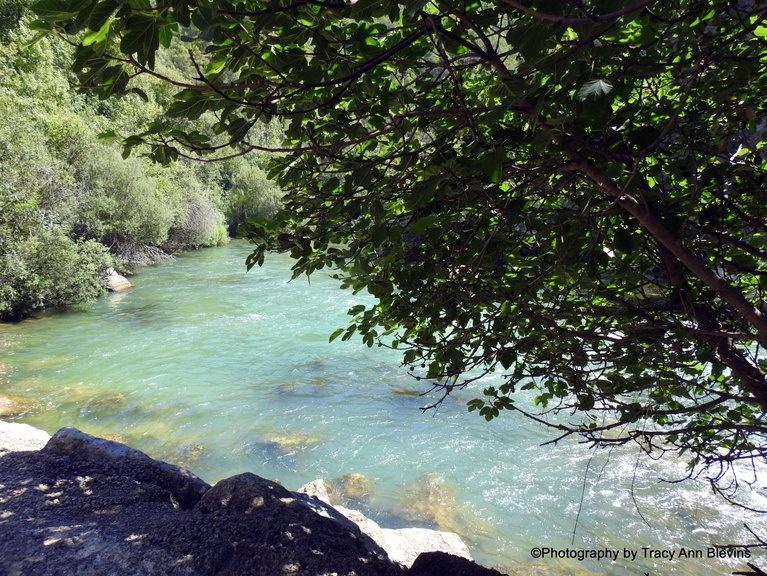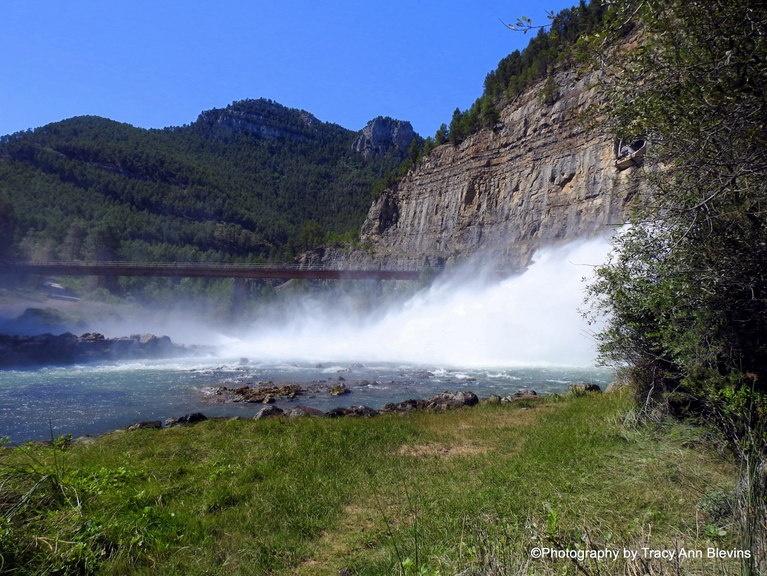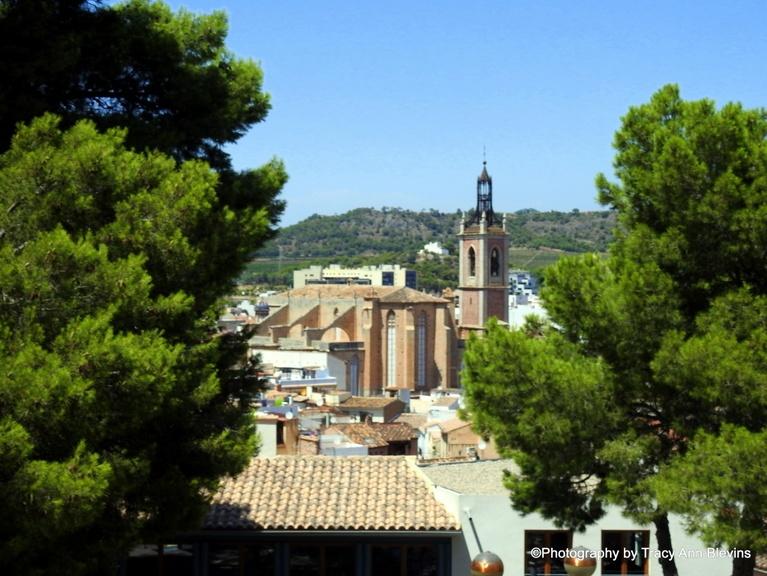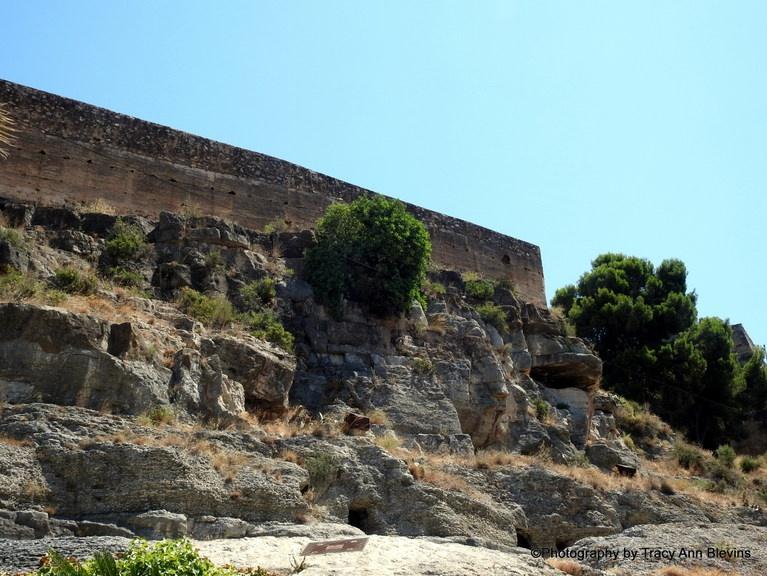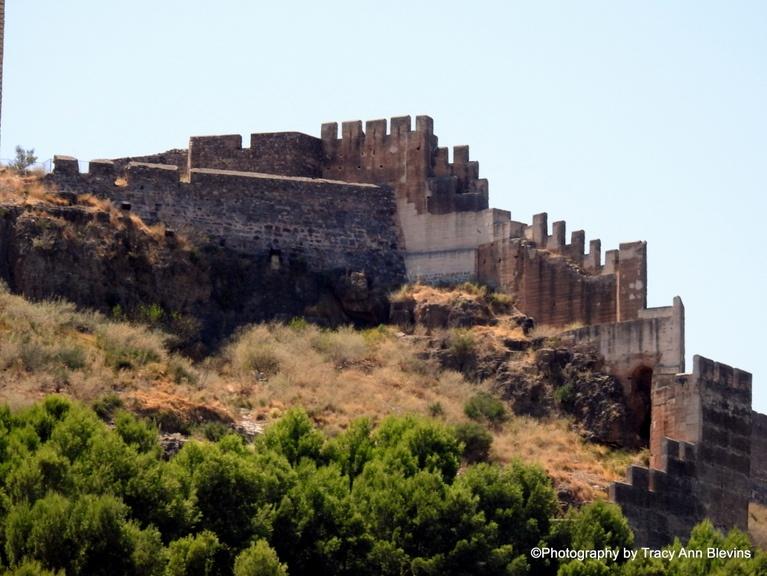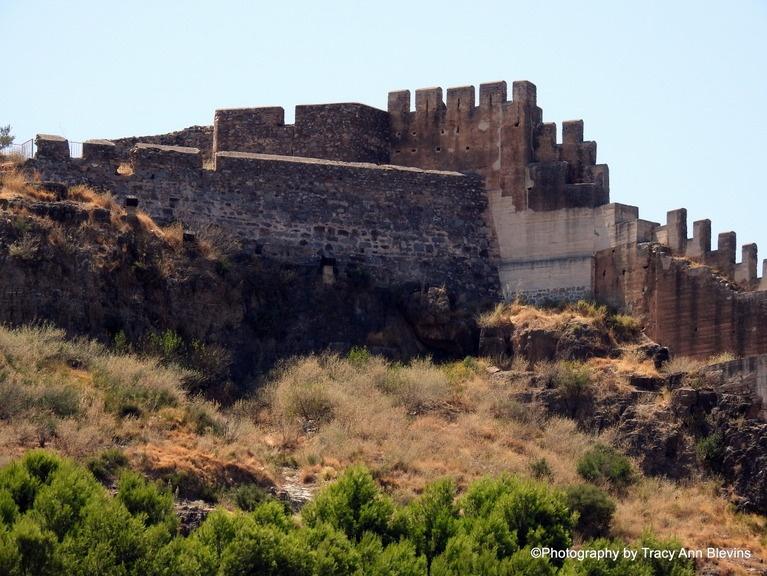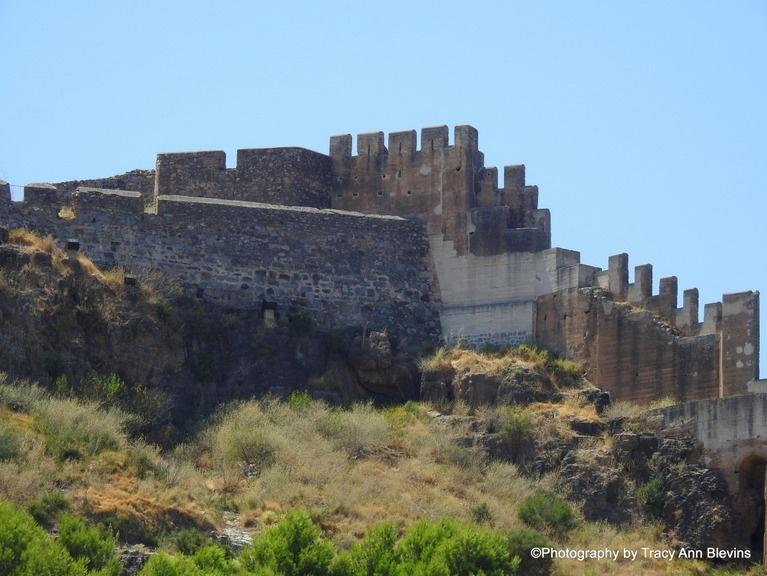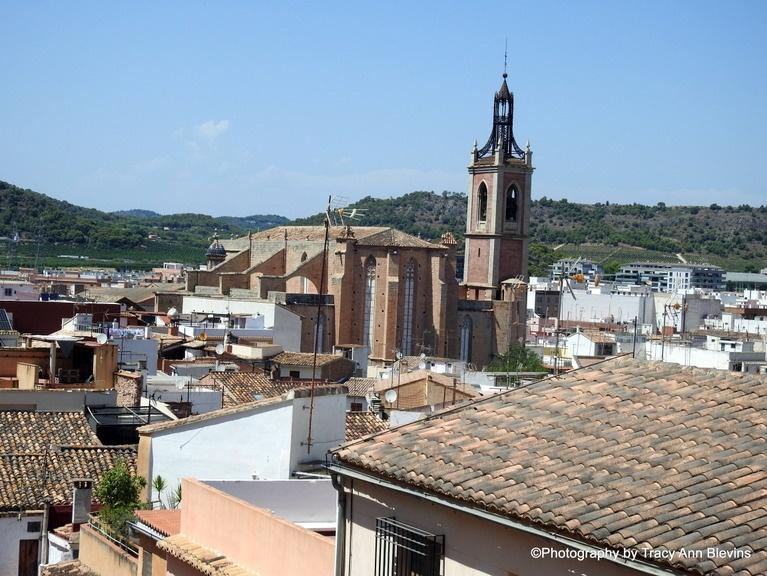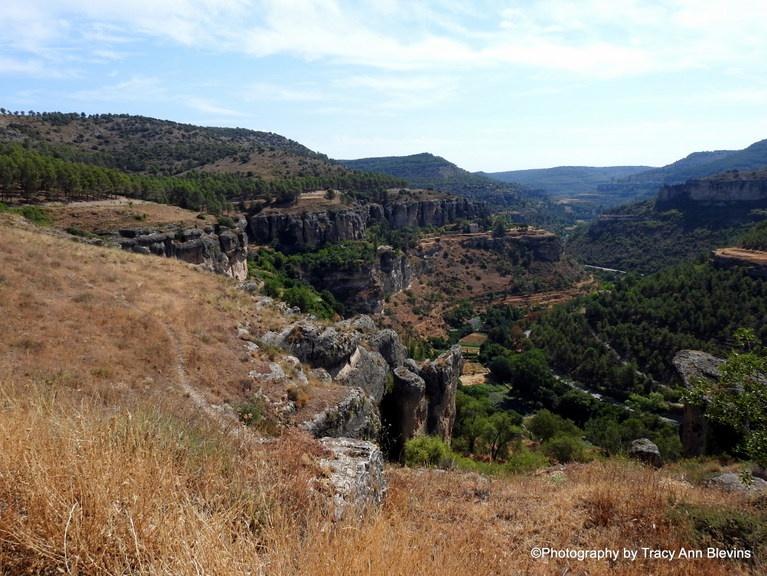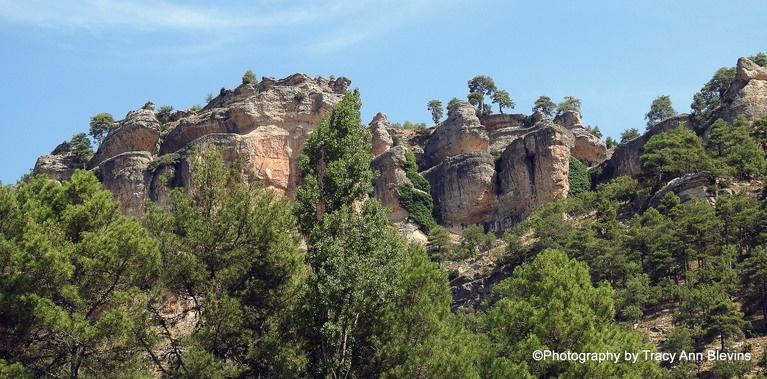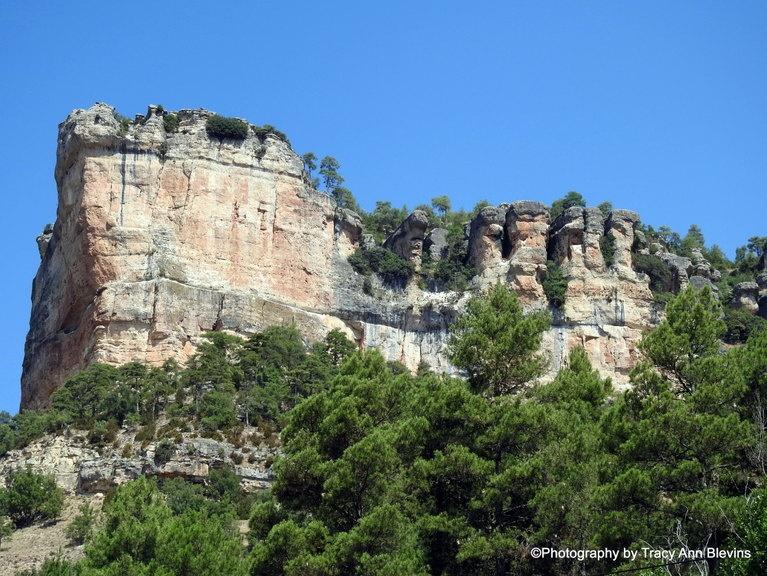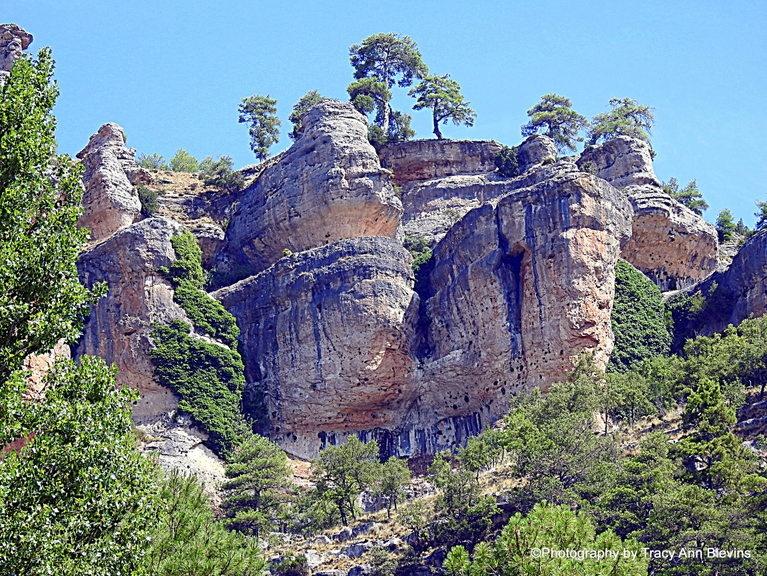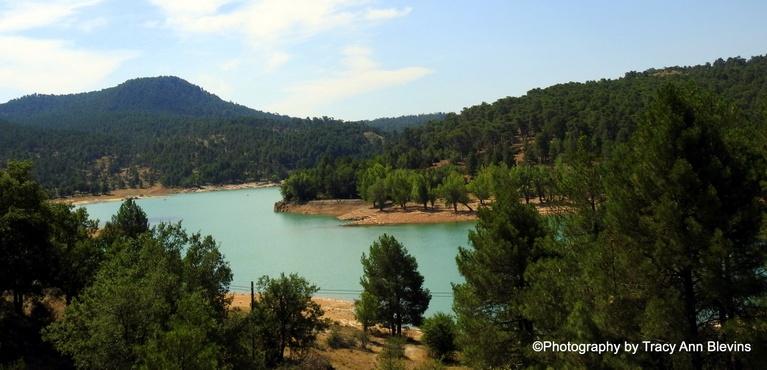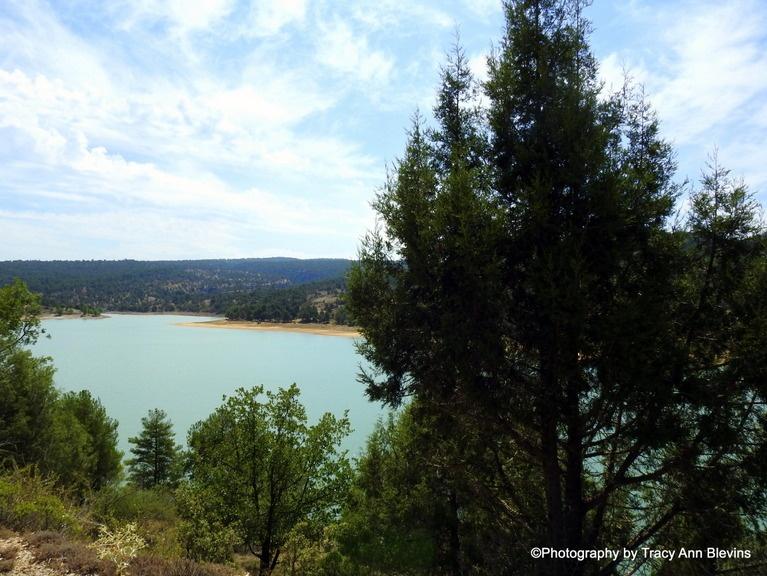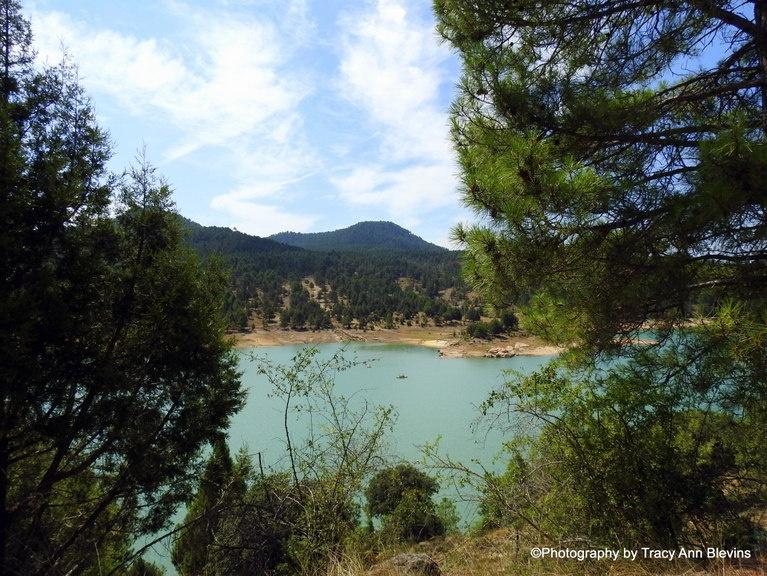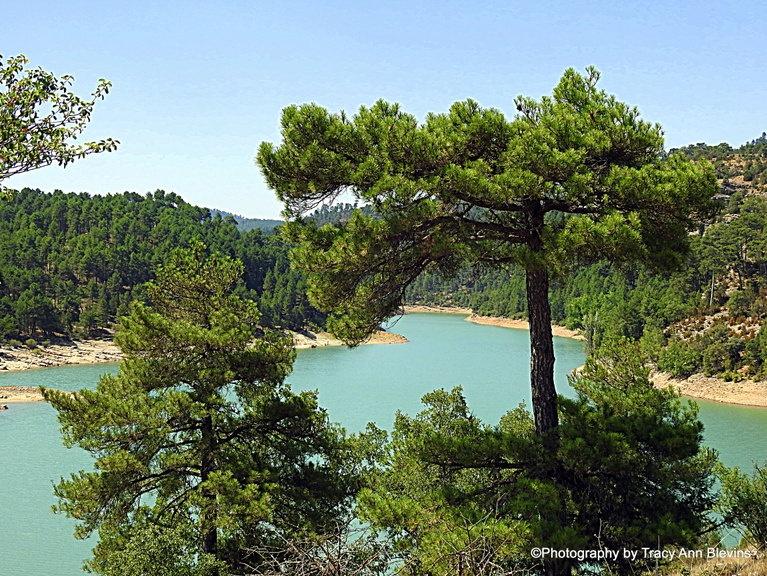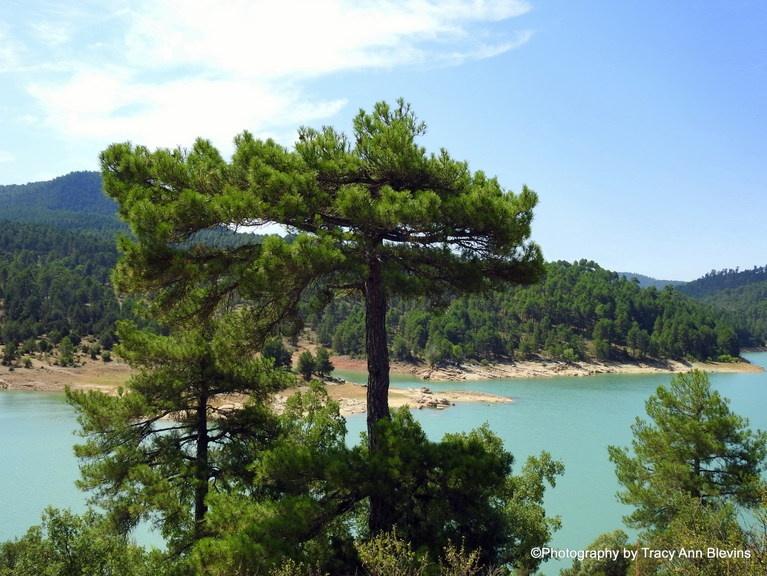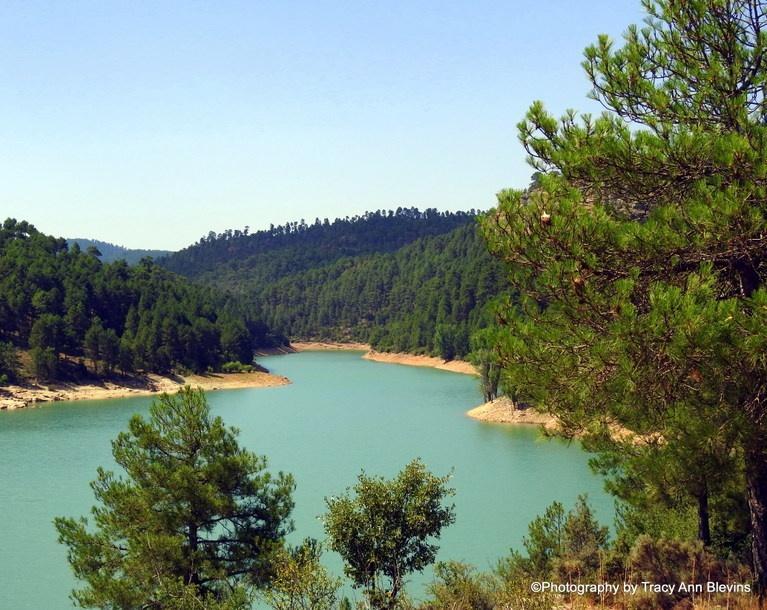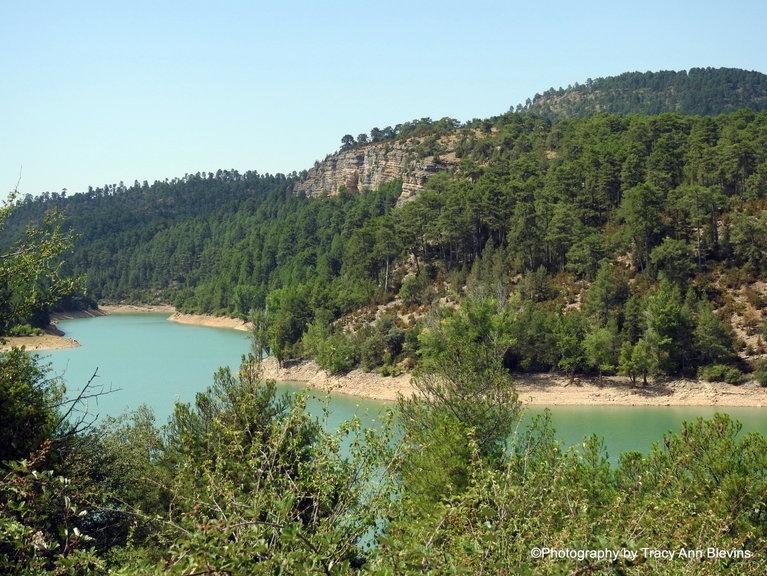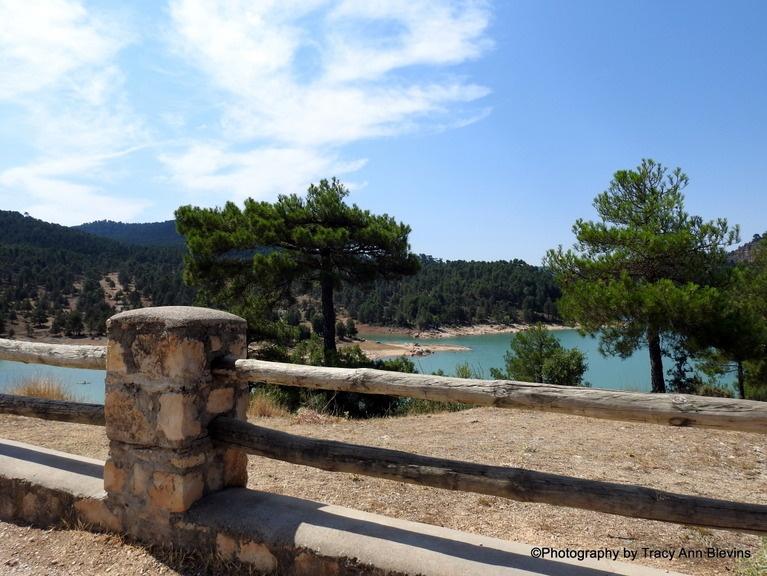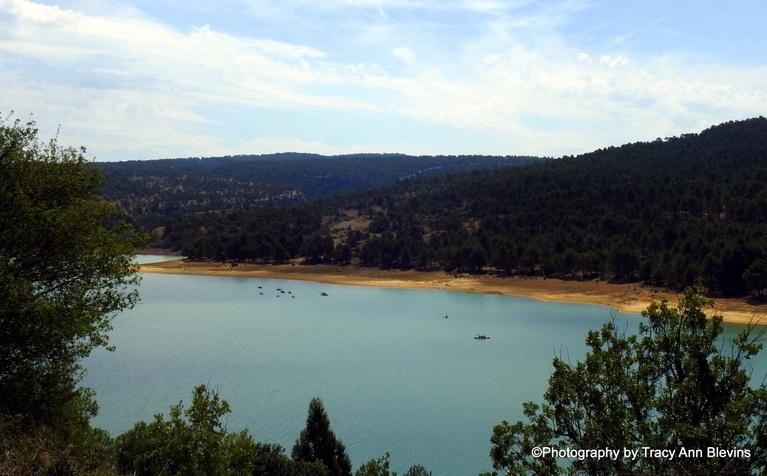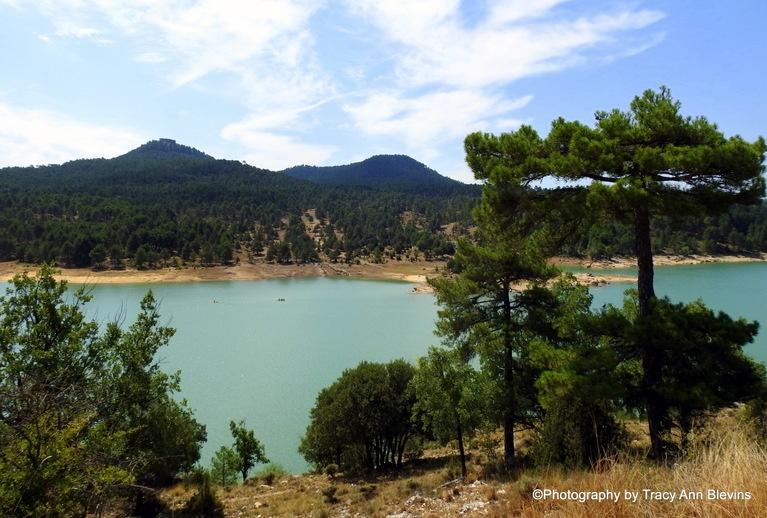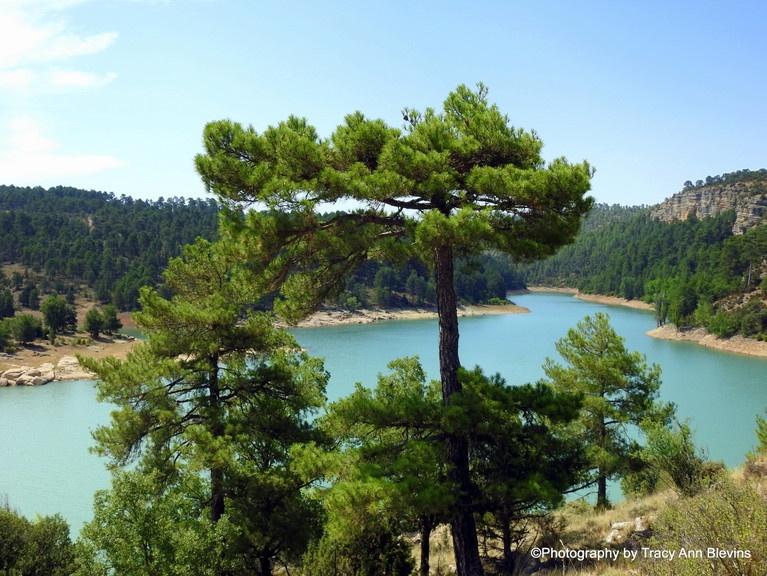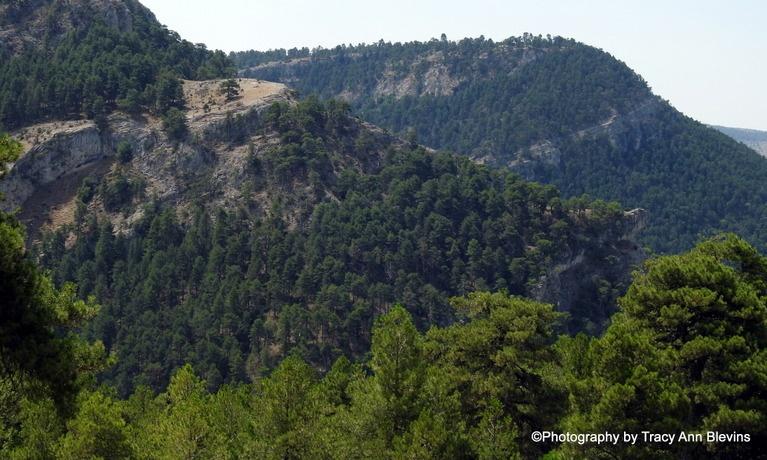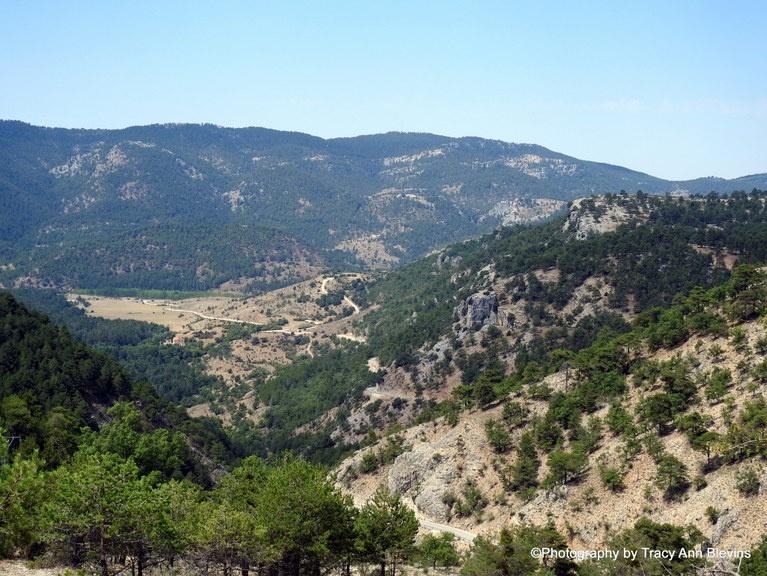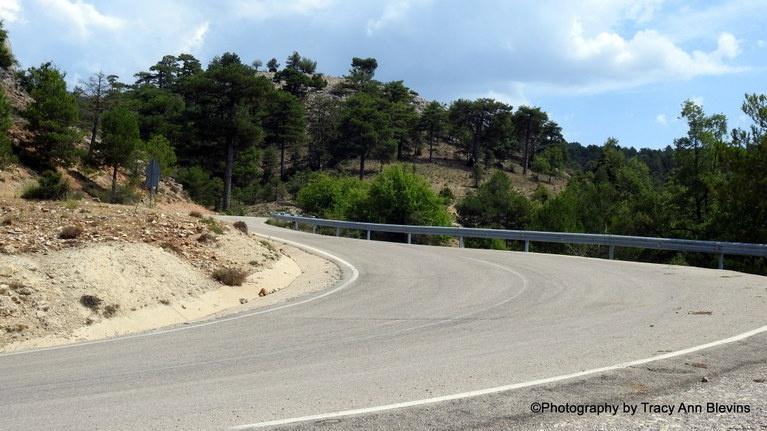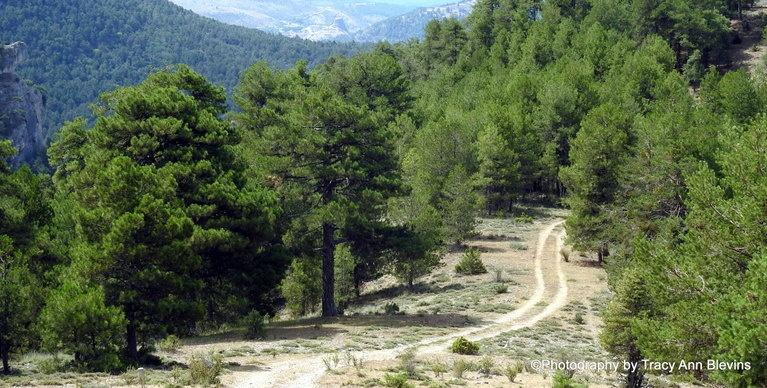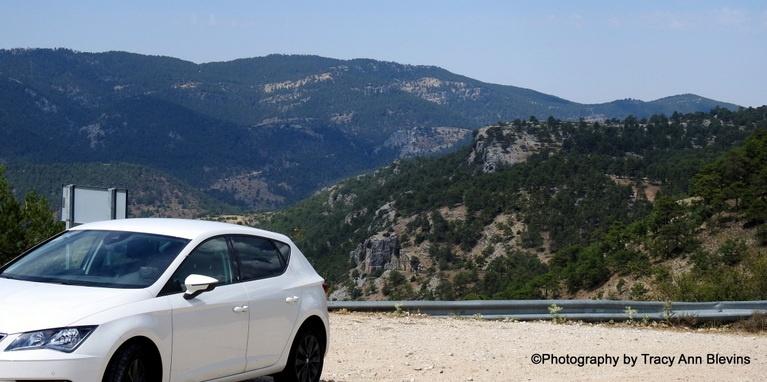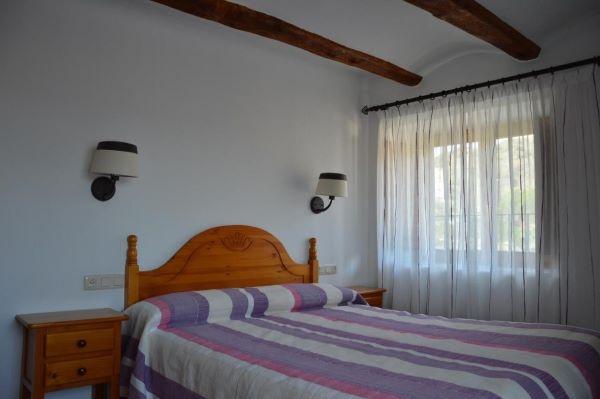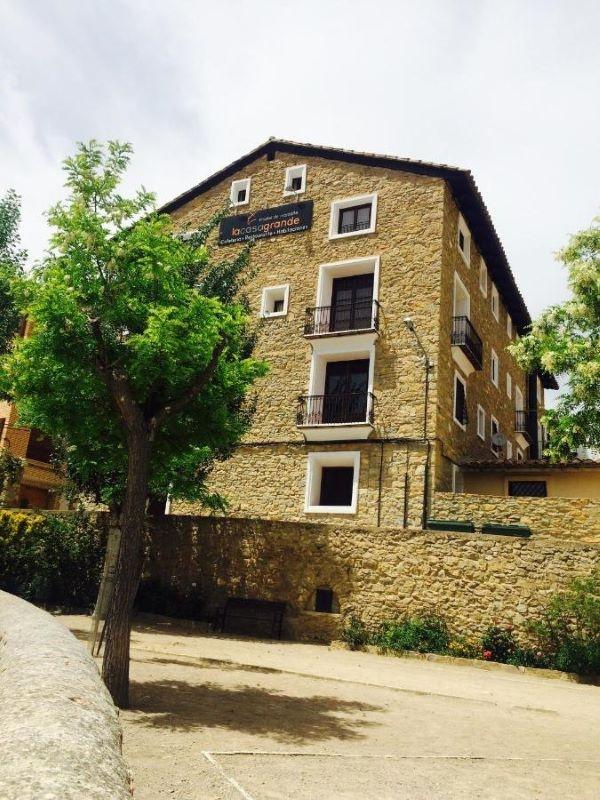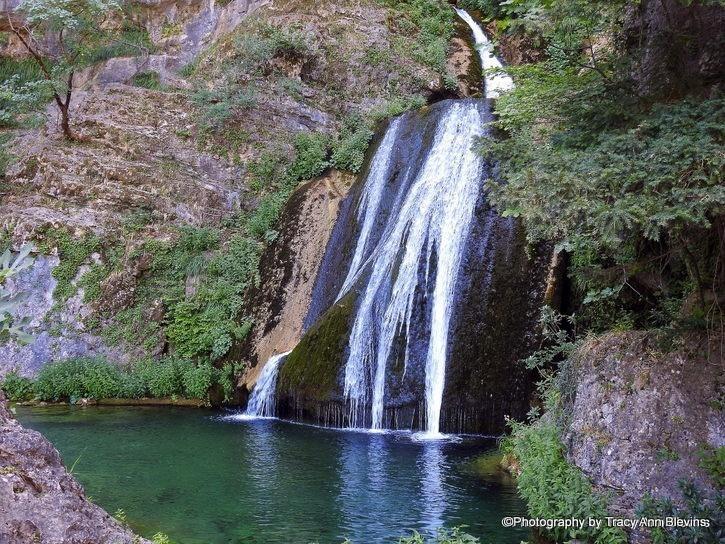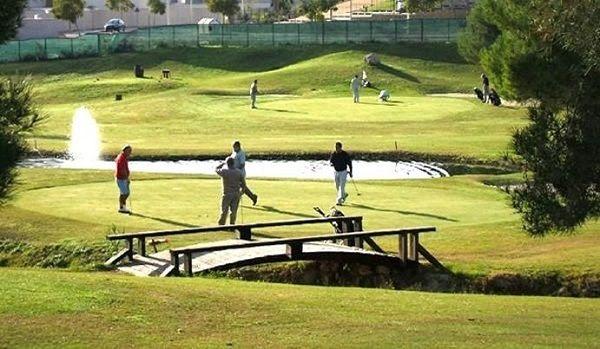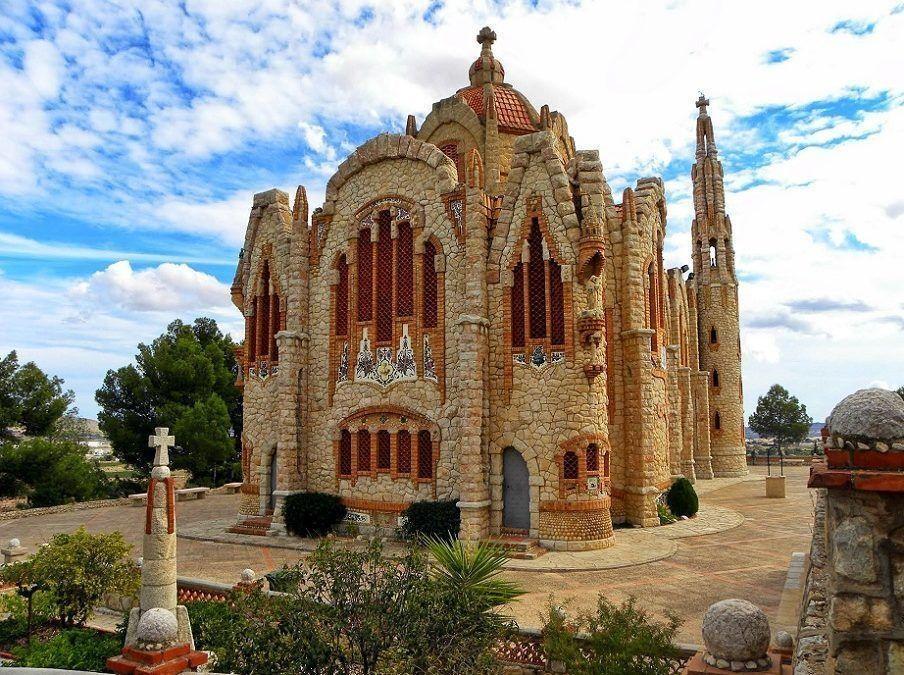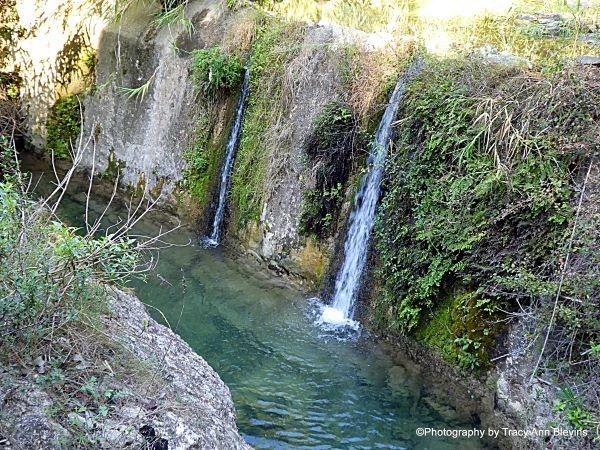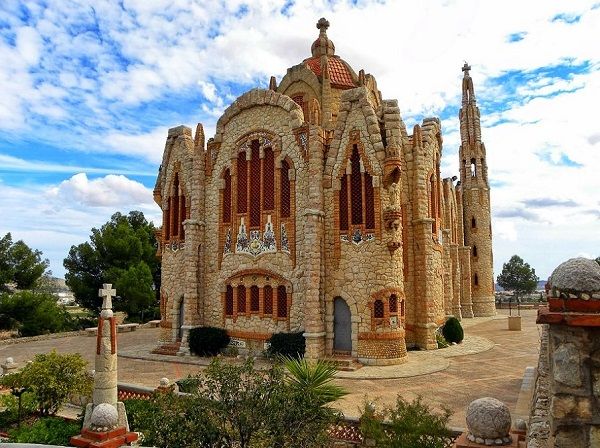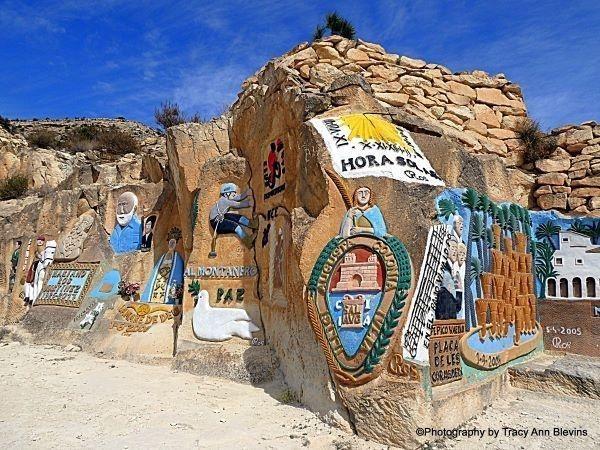
El Cau de Elche - Open Air Museum
The El Cau de Elche, is a wonderful Open Air Museum, situated just outside Elche/Elx, in the area known as El Ferril, in the Elche mountain range of Tabaià, this is a real hidden treasure and well worth a visit.
El Cau means The Burrow, and here in the arid mountains you will find over 100 sculptures, carved into this old sandstone quarry by Mariano Ross and friends.
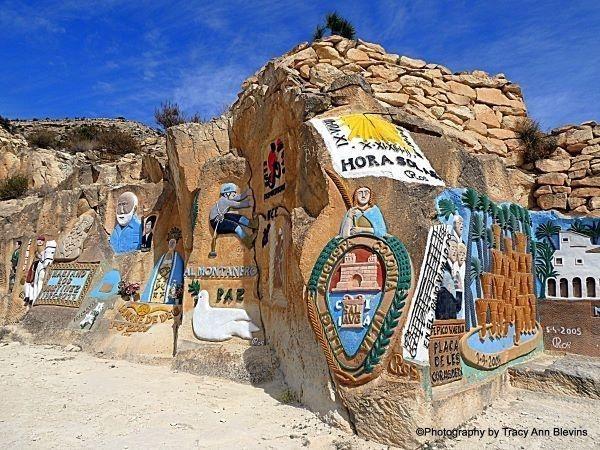
The sculptures include carved scenes of well known places in Elche such as the Elche Palm grove and the Basilica of Santa Maria, famous local figures such as shoemakers, hikers, the Lady of Elche, and even one for Elche Football Club, local festivals, animals and many, many more.
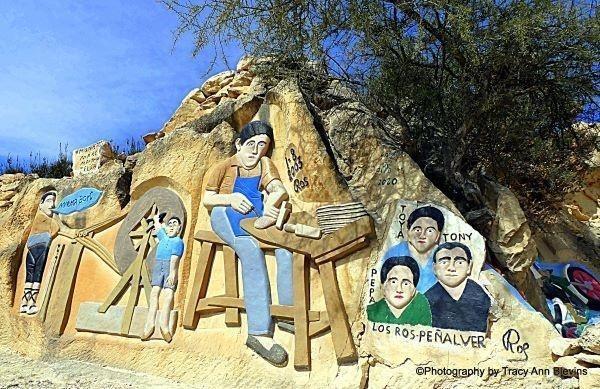
There are two small rooms excavated in the stone, hence the name "The Burrow" one of which has a table and a few chairs and a visitors book.
In addition to all this artistic work, various species of trees, shrubs and aromatic plants such as Rosemary and wild Sage have been planted in El Cau, all typical of this arid terrain and the Mediterranean climate.
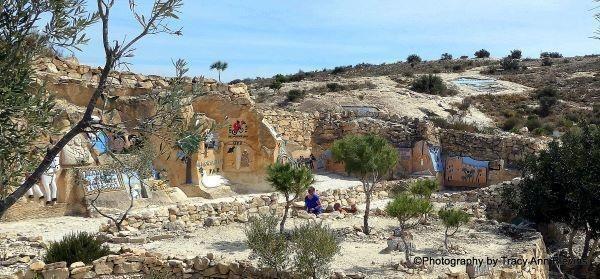
Walk to the summit and find amazing views of Elche, The Puig Campana, the Serra de Aitana, the Maigmó etc
How to get to El Cau
El Cau is situated about a 15 minute drive North of Elche, the best place to park is at the Mariano Ros, where there is a small parking area for around 8 cars, put these co-ordinates into your sat nav - 38.3209896 -0.6938685 for the exact location.
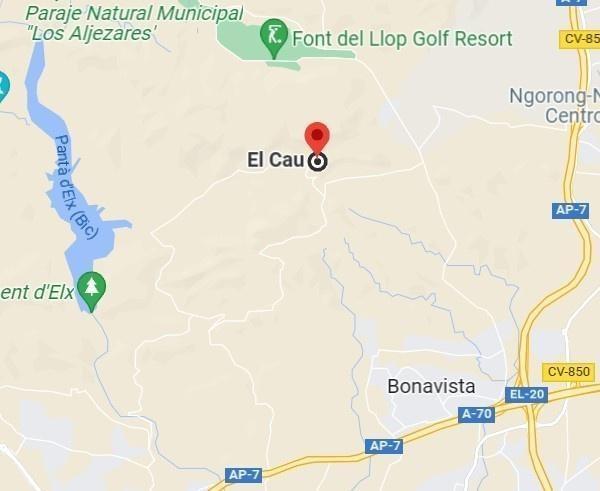
Once at the car park cross the road and you will see this sign.
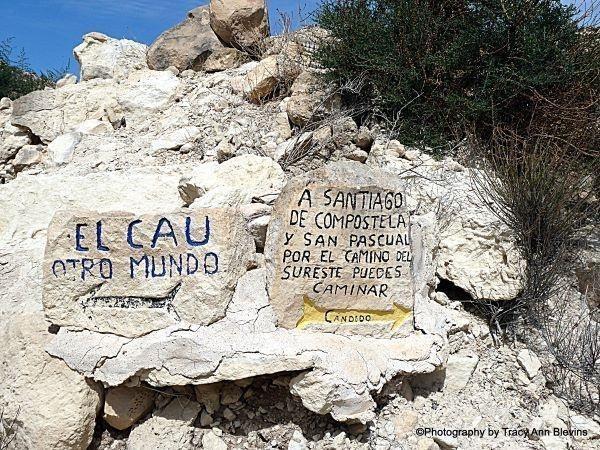
The route is very easy to follow as there are several signs (yellow and white) drawn or carved into the rock. The route is about 600m and will take on average about 20 minutes, as it is all uphill, make sure you wear suitable shoes, as this is a mountain path, with some loose rocks, also remember, hats, sunglasses and sun cream and take plenty of water with you.
Is this suitable for Children and people with walking difficulties?
Children of all ages will love it here, but due to its location in the mountains and the stony route to get to the venue, it would not be suitable for children in pushchairs or anyone with walking difficulties.
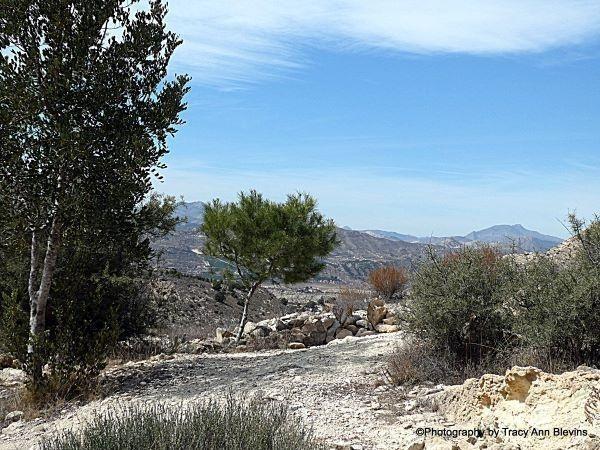
When is the best time to visit?
El Cau is open ALL year round, but it would be exceptionally hot during the summer months, so the the best time of year to visit would be during the Spring, Autumn or Winter.
Entrance Price - FREE
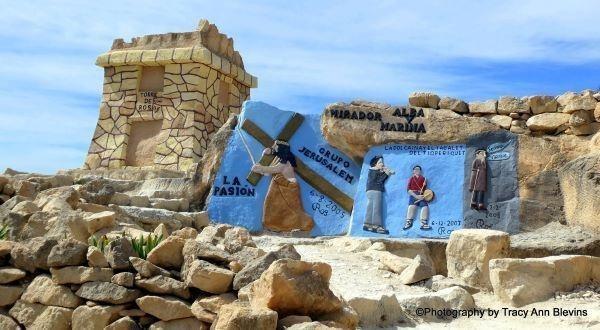
There are also NO facilities in this area, so if visiting during the summer, make sure to take adequate water with you.
El Cau de Elche - The history
Mariano Ross, the creator of El Cau, born in 1926, died in April 2017 at the age of 91. Mariano was a shoemaker from Elche and began this work or art after he retired.
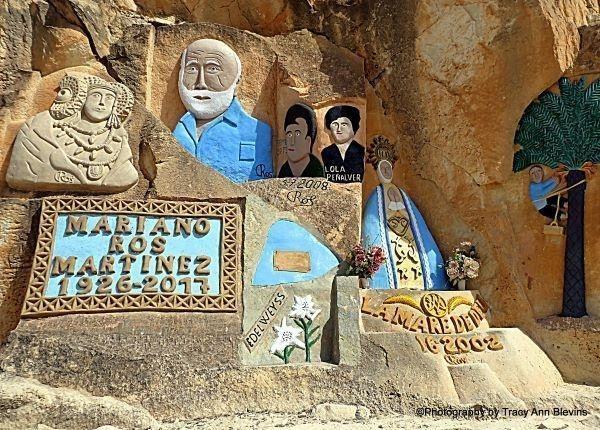
The first location for the sculptures was in the Sierra de Castellar, situated next to Elche Reservoir, in the same place where the remains of the first Islamic settlement in Elche were found, but due to various protection rules in 2000 Mariano had to move his sculptures to their current location, and with the help of friends and colleagues he continued working on the sculptures, most of which were made in honour of his beloved city, Elche up until 2008.
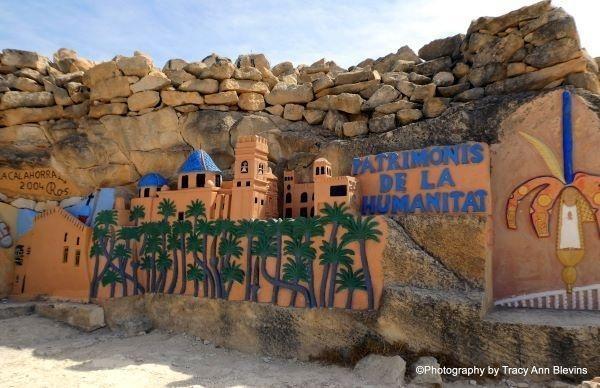
Since Mariano's death El Cau continues to be looked after and cared for and even added to, the most recent sculpture is dated March 2023.
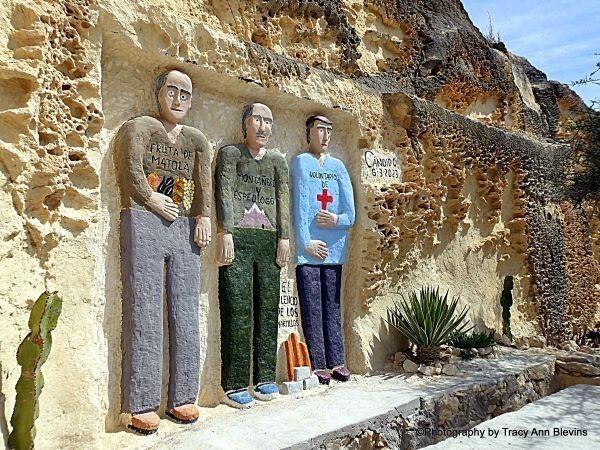
Whilst you are in this area, visit the Patano de Elche, either walk which would take about just under an hour to cover the 4km over the mountains, but this is a bit of a tricky route, especially if walking with children, so we would recommend you go from one place to another by car.

Join us on Facebook for other ideas of places to visit, news and information about Benidorm and the surrounding area.
Have you visited the above? If so comment below.
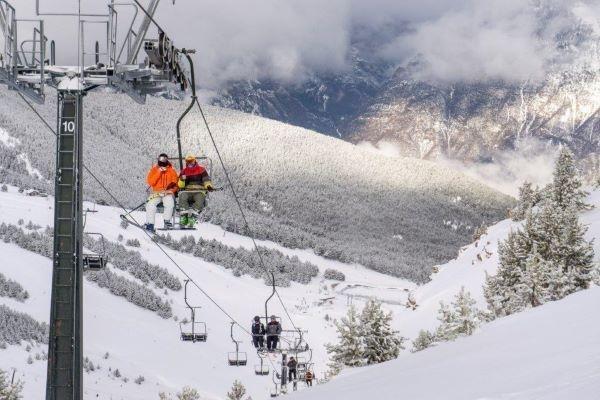
Ski Resorts in the Valencian Community
The Valencian Community (Comunidad Valenciana) is of course best known for its superb beaches, but did you know there are also ski resorts in this area, which are open during the winter months.
The two main ski resorts are called La Estación de Valdelinares and Javalambre, out of ski season these areas are very popular for hikers, so are busy all year round.
Ski Season in this area is generally between mid December to early April.
Valdelinares
Only two hours by car and 144 km from the centre of Valencia and just over a 3 hours drive from Benidorm (291km).
Valdelinares is a, small, picturesque ski resort set in the pine-forested Sierra de Gúdar mountains, the nearest major town is Teruel.
Valdelinares is situated at a height of 1,700 metres (maximum elevation 2024 metres). Although higher up it doesn’t tend to snow much, but skiing is now guaranteed thanks to the artificial snow cannons.
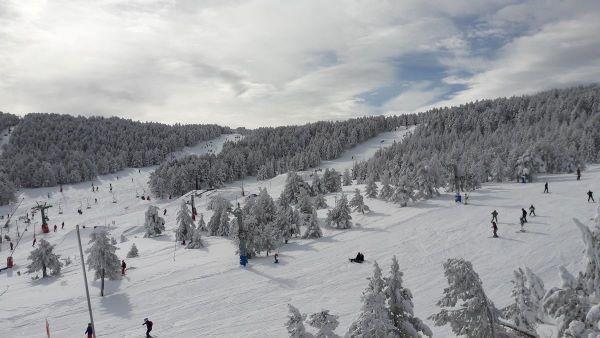
There are 7.5 kilometres of runs comprising of 9 runs, 3 green and 3 blue runs for beginners and 3 red for intermediates, ski lessons are available as is ski hire.
Valdelinares has thirteen tracks five green, four blue and four red, a snowpark and a skill practice area.
Facilities at Valdelinares include a restaurant, cafeterias.
Although there is no accommodation at the ski resort itself, there are a number of nearby villages such as Mora de Rubielos and La Virgen de la Vega which have some lodges and hotels.
Javalambre
Javalambre ski resort is situated 140km from the centre of Valencia and about a 3 hour drive from Benidorm (289km).
The ski resort itself is situated at a height of 1,775 metres (maximum elevation of 2000 metres). This is a very open ski resort, with few trees and wide runs, making this the ideal place for beginners. Experienced skiers will find the skiing here quite limited.
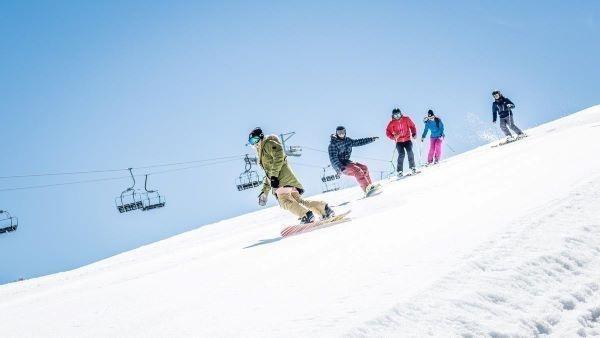
There are thirteen tracks, four green, eight blue and one red, a freestyle track and another for skicross, this area has over 95 artificial snow cannons, to ensure good skiing conditions.
Sabina, Lapiaz and Portillo are the three areas at the ski station that have restaurant service, toilets and equipment rental.
There is no accommodation at the ski resort of Javalambre itself. The nearest major town would be Teruel.
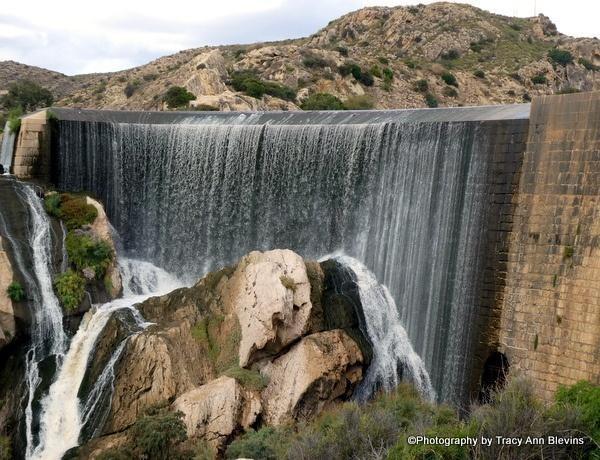
Pantano de Elche - Elche Reservoir
Pantano de Elche is situated just over 70km from Benidorm and 5km north from Elche itself and is a wonderful area to visit with nature reserve and swampland teaming with interesting and colourful flora & fauna.
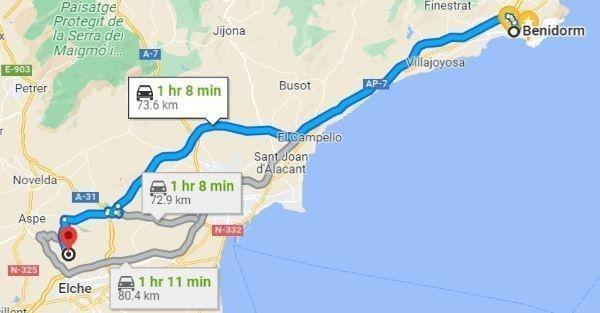
The best place to park is at Aparcamiento Pantano de Elche, the walk to the dam from here takes about 20 - 30 minutes. The trail follows the valley of the Rio Vinalopó There are a few steep and rocky bits, which do get muddy and slippery during wet weather.
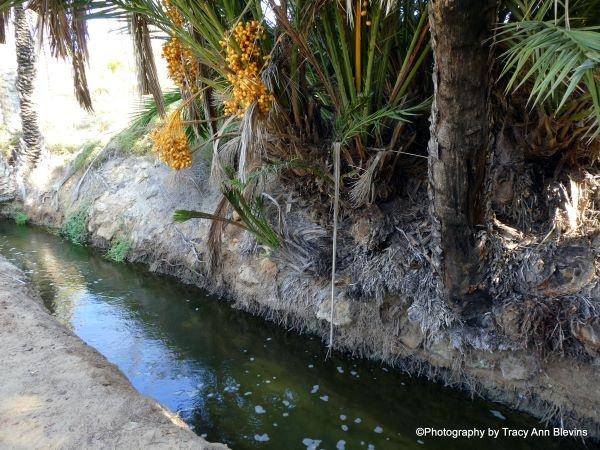
There are handrails in the tricky sections and wooden bridges where the path criss-crosses back and forth over the river follow the posts with arrows to keep you heading in the right direction.
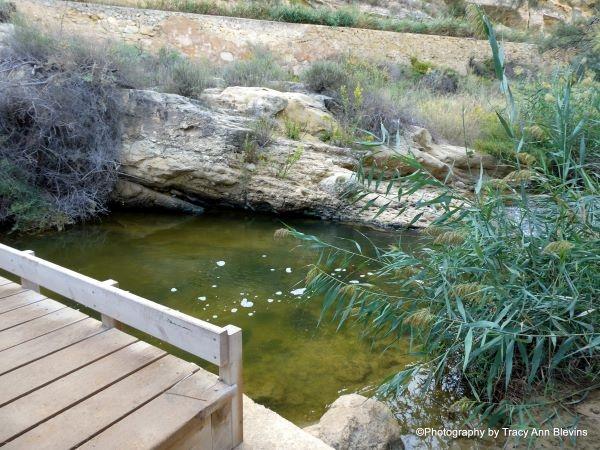
This walk is not suitable for anyone with walking difficulties are some areas are very rocky with steep inclines
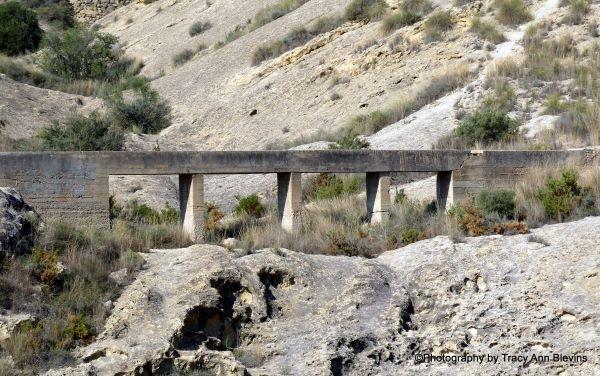
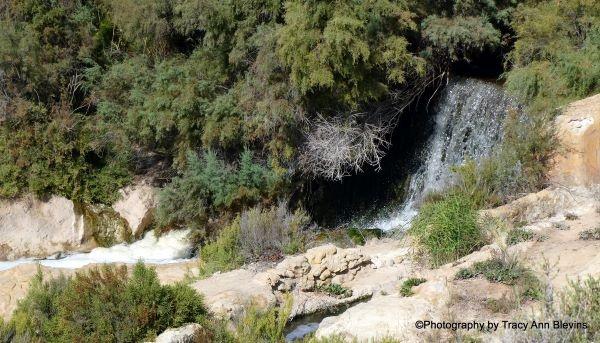
The lake and vast swamp marshes have been formed over many years after the construction of the dam wall which was the first arch type dam wall to be built in Europe since Roman times. It lies in a vast natural basin which forms the lake, surrounded by arid countryside, orchards with ravines. The whole area has many excellent hiking and mountain bike trails.
When you get up to the dam itself, there’s a spectacular curtain of water cascading over the top and crashing into the valley of the Rio Vinalopó below, This is the most popular feature of the nature reserve, especially with families out for a picnic, is the area below the dam wall where the water overflows from the lake creating spectacular natural waterfalls. .
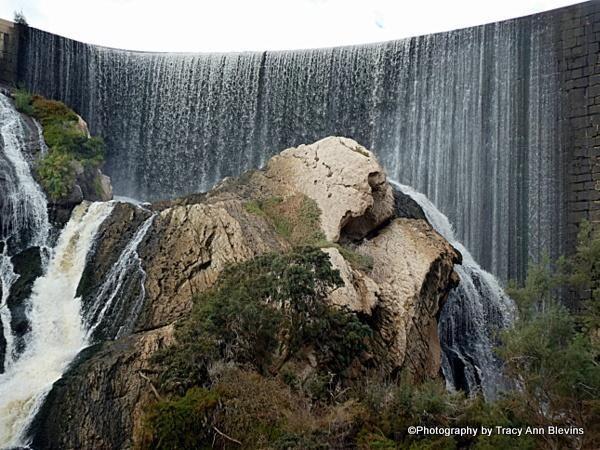
There is a ladder set in the rocks beside the waterfall which gives you assess to the upper part of the reservoir or follow the rock path set just behind the centro electrical building., this gives you fantastic views of the top of the falls and the reservoir itself.
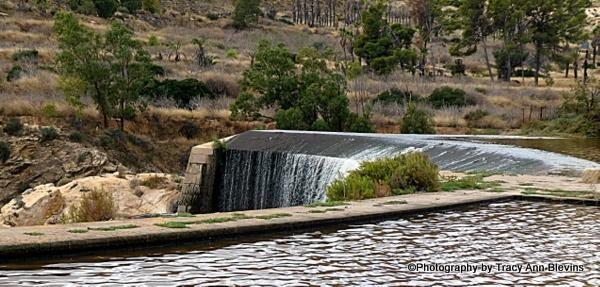
The dam built in the seventeenth century (1632) and contains the water of the Vinalopó River and is the second oldest active reservoir in Spain. The dam was damaged due to heavy rain and flooding in 1793 and was out of action until 1846 when it was repaired, sadly in 1995 the regulatory gate of the dam was broken and was repaired in 2007. The dam itself is no longer in use which allows water to permanently over the dam wall.
The river also used to generate hydro electricity; you can still see the installation just below the dam, this building is dated 1922.
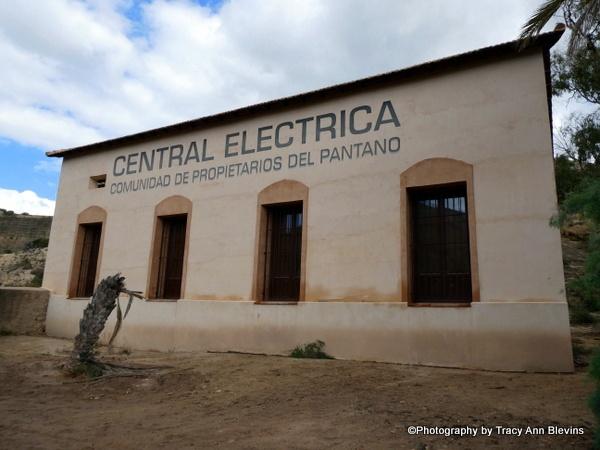
Today the Elche reservoir is recognized as an Asset of Cultural Interest by the Valencian Community.
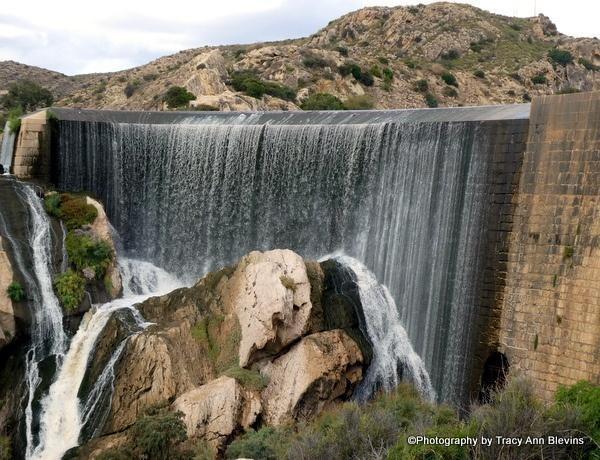
The dam is 22 meters high and 75 meters wide., the walls are 12 meters thick at the base and 9 meters at the top.
In 2019 a floating platform was built on the reservoir where you can walk above the water for a short distance, from here you can also walk further along the lake shoreline.
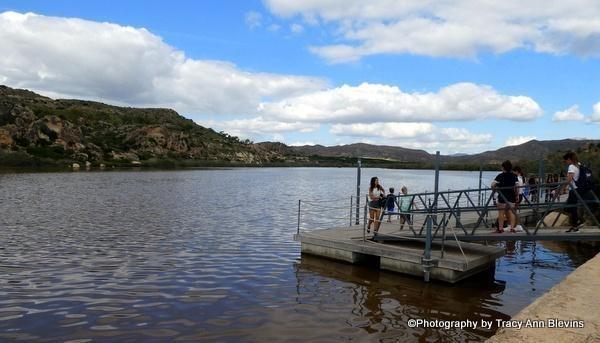
Nature enthusiasts will be in their element due to the amount of flora & fauna of the area. The surrounding countryside, ravines, swampland, marshes and lake form an intricate microclimate and this area is an important natural feature of the municipality of Elche and the entire area is protected.
There are literally hundreds of different species of trees, plants, shrubs and flowers, bird life includes a variety of waterfowl as well as majestic birds of prey. The lake and marshes are teeming with fish and reptiles, and you may even spot the odd wild boar. You can also see foxes, ferrets, various types of mice, and if you're lucky, a very elusive Genet cat.
El Cau de Elche
Whist in this area another great place to visit is the El Cau de Elche, a FREE open air museum, containing over 100 sculptures made of sandstone and just a short drive or an hours walk across the mountain trails. Find more information here.

Dams are great places for a walks with their beautiful blue water and spectacular mountain scenery. Try these:-
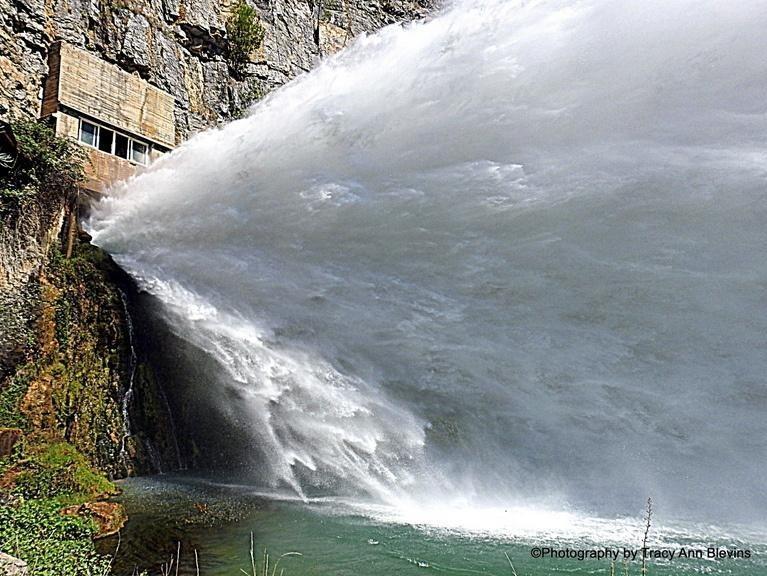
Spanish Road Trip 2022 - Day 11 Nogueruelas back to Benidorm
Spanish Road Trip 2022 - 4th August. The Journey home Nogueruelas to Benidorm via Montanejos and Sagunto 283km
After another amazing Spanish Road trip its time to head home, but not before stopping off at one of our favourite places Montanejos.
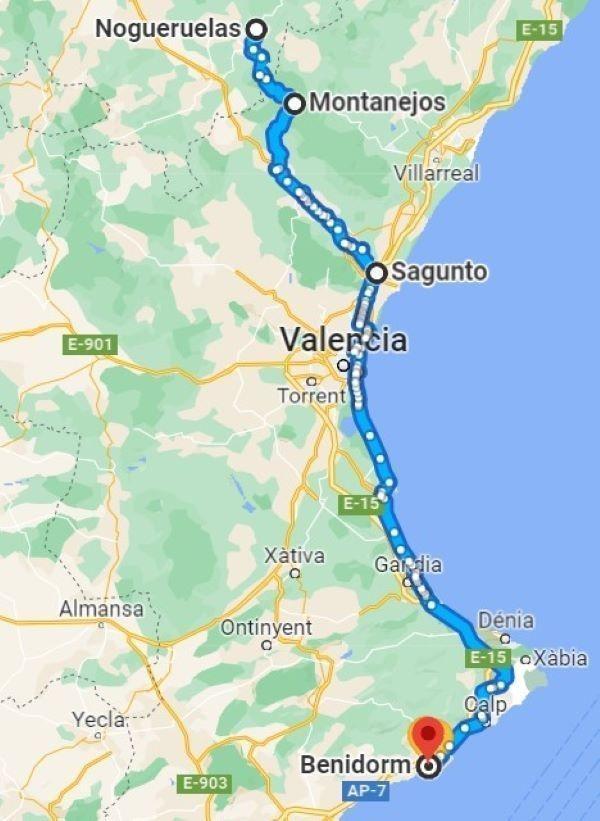
We visited Montanejos last year and fell in love with the area. Montanejos is located in the Province of Castellón,, which is part of the Valencian Community and only about 247km from Benidorm.
Embalse de Arenós This reservoir is about 3km from the town of Montanejos, work on the reservoir began in April 1970 and it took until 15th July 1977 to relocate everyone that lived in the area. Under the waters are several villages, Romeral, Torcas, Masadica and a few others that seem to have been forgotten over time, the dam itself was completed in 1977, it is 109 meters high and about 500 m thick at the base.
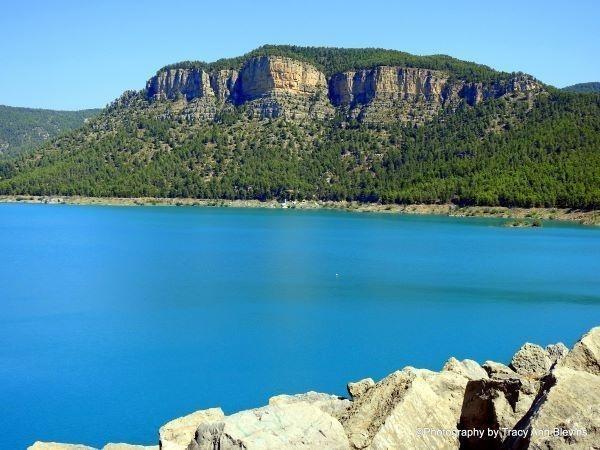
Today tourists can enjoy kayaking adventures on the pristine waters of Lake Arenós.
El Chorro - The JET
The real pièce de résistance in this area for us is what is called El Chorro, The JET, which is a giant water spout (drainage point or spillway) from the Arenos Reservoir. This is so amazing, its hard to describe just how beautiful and how powerful it is abut 41,000 litres of water flow out per second.
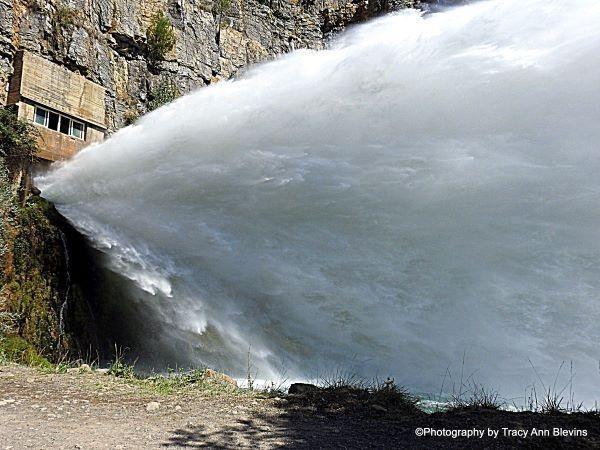
Walking through what seems like a fine mist of icy cold water is an experience you will never forget, it feels like you are in the middle of a storm of icy rain and wind as you get pulverized by the spray, and the noise is out of this world.
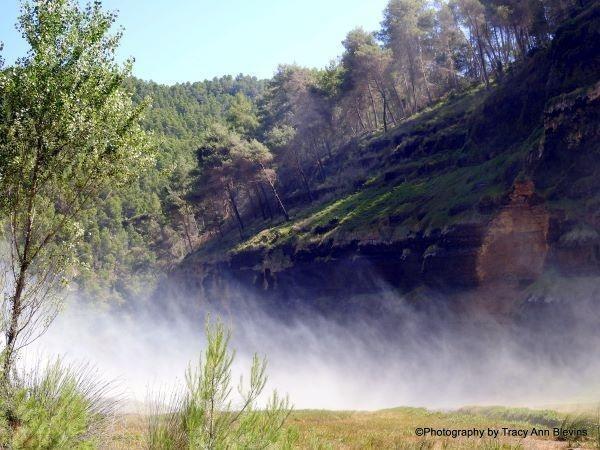
If you are not brave enough to walk through the mist to get to the river on the other side there is a observation bridge where you can get some fantastic photos, which is where the video below was taken from.
To be honest we are never sure if we should be here, but there are parking space for a few cars and there are always others here, but there is also a sign stating "passage is forbidden" most people clamber down the rocks to reach the path to the jet, but there is a road which is a lot safer.
Montanejos and Fuente de los Baños de Montanejos
The town itself is very small with only 2 or 3 hotels available and just over 600 residents, but it is such a popular area, especially during the summer months, that you would need to book a hotel here well in advance.
What makes this area a favourite for many is the Fuente de los Baños de Montanejos which we spent time at last year, enjoying the Mijares River with its natural thermal swimming pool, the river is dotted with pebble beaches and areas suitable for swimming and paddling.
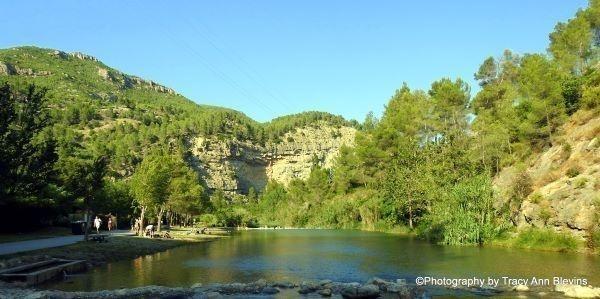
The water at the main font is said to maintain a constant temperature of 25ºc all year round. although we didn’t feel it was that warm, but then it was 38ºc. This thermal pool has hydrogeochemical and biological properties (mineral baths), which are said to have positive effect on our health.
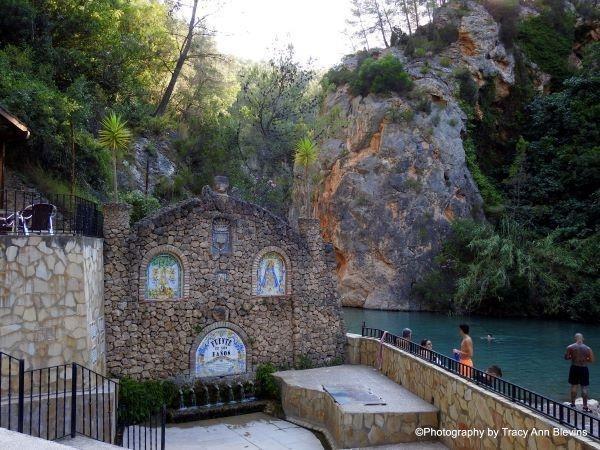
According to a legend, the Moorish king Zeit-Abu-Zeit built some baths here so that the women in his harem would always remain beautiful and young. We also tried this last year, and are neither younger nor more beautiful...... Remains of the ancient Arab baths from the 12th century can still be seen on the bank of the river.
There are quite a few different car parks in the area, and there is a small entry fee (around 4.00€ for adults) to the river and thermal spring, but its well worth it. during high season there are toilets and showers and somewhere to change and a kiosk for refreshments and snacks.
There are some amazing rugged ravines and this whole area is well worth a visit.
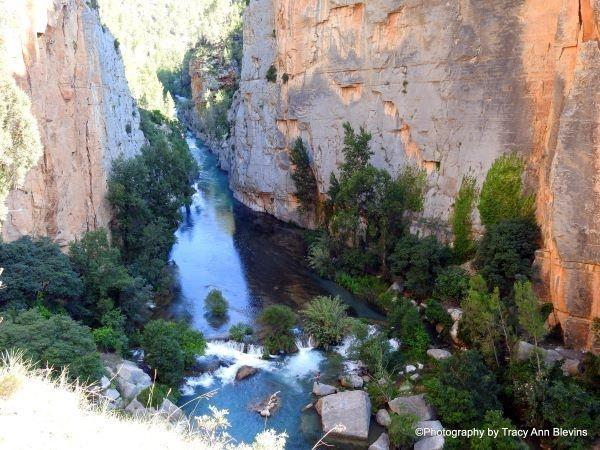
Spanish Road Trip 2022 - Sad to be leaving one of our favourite places we continue on with our journey home, stopping off at Sagunto.
Sagunto - Situated 30km from Valencia and is best known for the remains of the ancient Iberian and Roman city of Saguntum. One the most visited sites is the Castillo de Sagunto this fortress overlooks the town. The site's history extends back over two thousand years and includes Iberian, Roman and medieval remains The castle was declared a National Monument in 1931.
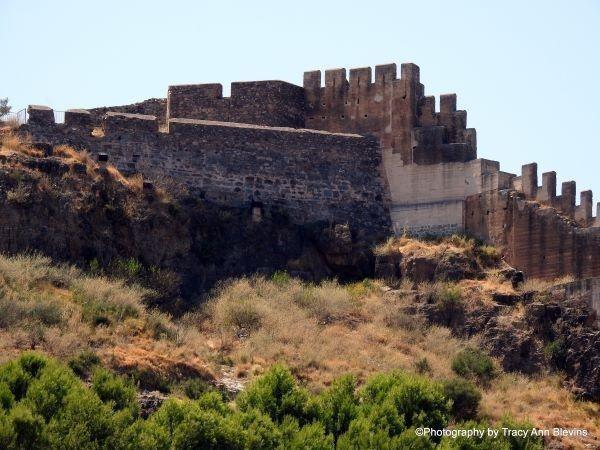
Sagunto´s Roman theatre was built in the 1st century and has also been declared a National Monument. It was built making use of the concave shape of the mountain and has exceptional acoustics, with two semi-circular seating areas carved out of the rock, with room for 6,000 spectators.
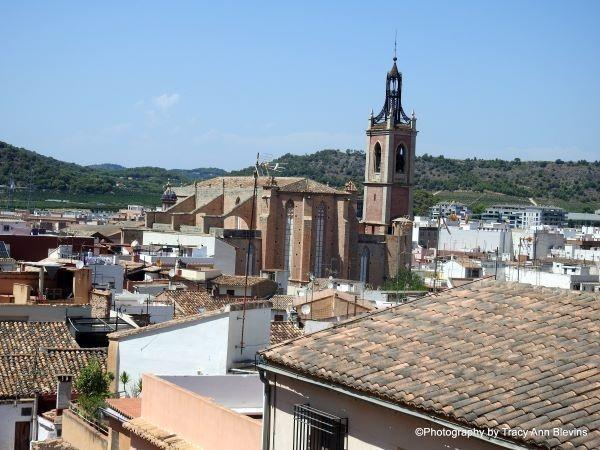
Unfortunately it was just too hot at 38ºc for us to explore the area as much as we wanted, so Sagunto is on the list for a return visit another time of the year, when its a bit cooler.
A short distance from Sagunto town is the port, with 13 kilometres of sandy beaches dotted with sand dunes making this a popular area for tourists.
The last part of our journey Sagunto to Benidorm, when you are on your way home, you just want to get there quickly, so for the 1st time in 11 days we used the motorway, hence nothing exciting to report.
Arriving safely back in Benidorm, that is the end of this years road trip, we have thoroughly enjoyed it once again, having visited some amazing places, stayed in various accommodation, some good and some that will be remembered for other reasons.
If you love driving and exploring then this is definitely the holiday for you.
Spanish Road Trip 2022
Distance driven - 2, 299km
Total cost of 10 nights accommodation - 554.05€
Additional car parking expenses - 32.00€
Total Diesel cost - in the region of 200€
Best value for money accommodation - A tough choice but Day 7 Puerto Lumbreras Hostal del Sol 2 star, 40€ breakfast included and the other has to be Quenca, Day 9 Hospederia Seminario Conciliar de San Julian, 3 Star - 65€ including breakfast
Worst accommodation - This has to go to Las Banderas, 3 star 44.00€ (4.00€ tax) ample FREE Parking and FREE room upgrade which although cheap was dated and smelly - Day 8 - Villafranca de los Caballeros
Favourite place visited - Cuenca wins again - Day 9
Most disappointing - Unfortunately our last night at Nogueruelas. day 10
Best surprise along the way - Day 2. the Santurario de Nuestra Señora de la Esperanza (Sanctuary of the Virgin of Hope) Calasparra.
What we found different this year - The HEAT, wow! was it hot? To be honest it was hot in previous years but this time we both seemed to struggle more, which made seeing the sights more difficult. We may need to re-think next years trip, but this years was governed by work and as August is the quietest time in Benidorm for British tourists was the only time we could fit in our own holiday.
Accommodation - We found it much more difficult to find accommodation in the places we wanted to visit. What we did find strange was that even though there was limited accommodation available, very few hotels were actually busy.
We love these unplanned ad hoc trips but may have to actually pre-book next year to make sure we get the right accommodation at the right prices, time will tell.
If you have any suggestions for next years road trip please comment below as we are always looking for new places to visit.
« Previous Day Back to Start »
Find more photos below (please note some of these are from our visit to Montanejos in July 2021
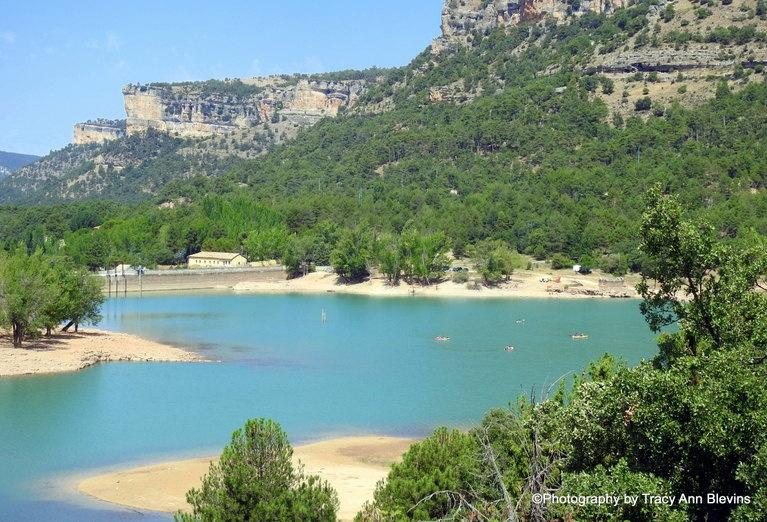
Spanish Road Trip 2022, Day 10 Cuenca to Nogueruelas
Spanish Road Trip 2022 - Cuenca to Nogueruelas 203km, 3rd August. Our last night on this years road trip, and unfortunately once again we could not book the accommodation we really wanted in Montanejos, so had to book what was available in the nearby village of Nogueruelas about 30kms away.
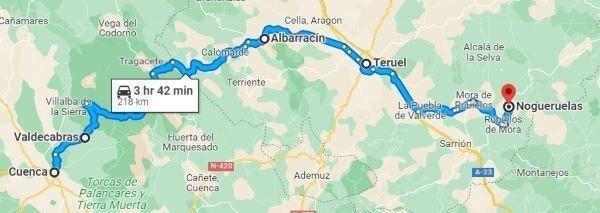
The journey from Cuenca was simply stunning, driving through the heart of the Cuenca Mountain Range with its majestic rock formations and miles and miles of thick pine forests.
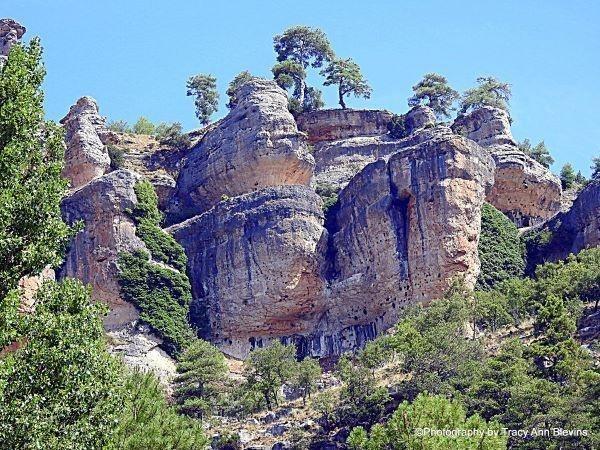
The vast majority of our journey seemed to be following the course of the Jucar river where we came across the wonderful Emblase de la Toba, which is the largest lagoon in the Natural Park of the Serranía de Cuenca.
The Toba Reservoir was built in 1925 to regulate the flow of the Júcar River, bathing and canoeing is actually permitted in this reservoir so its a popular area during the summer months, and for those more adventurous there are various caves and canyons to explore.
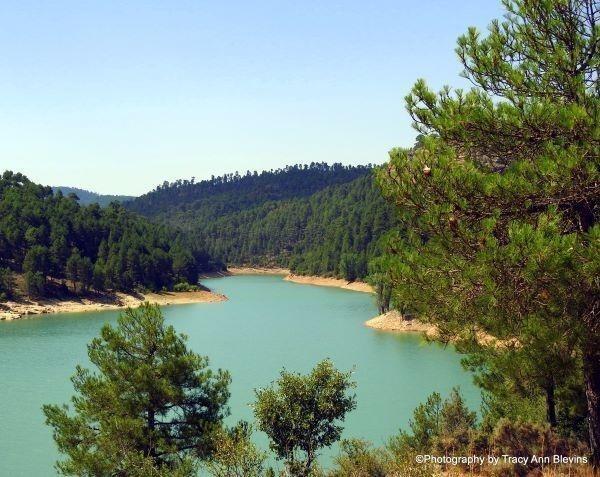
We drove through a couple of places that may be worth exploring next time we are in this area, Albarracín, which we did try to stop at but it seemed to be very busy and there was no parking available and Teruel.
Spanish Road trip 2022
Nogueruelas - A municipality located in the province of Teruel, Aragon and was really just a stop over, so we did not expect much knowing it was just a very small village, in fact the village only had 227 inhabitants at the last count, all of which seemed to know each other and we were lucky enough to come across some kind of children´s party going on in the small square, with children of all ages participating in water games, nice to watch but slightly inconvenient for us as all the roads were blocked during this event, so we could not go anywhere even if we needed to.
This whole area is popular with hikers, cyclists with various routes available for those feeling fit, and of course skiers in the winter, as the ski slopes of Valdelinares are just a 35-minute drive away.
Night 10 accommodation - Hostal de Montaña La Cas Grande, 3 star 66.60€ including breakfast. Free Parking
Looking forward to our last nights stay and picking this Hostal simply because it looked nicer than some of the others available and had an onsite restaurant, this turned out to be a big disappointment.
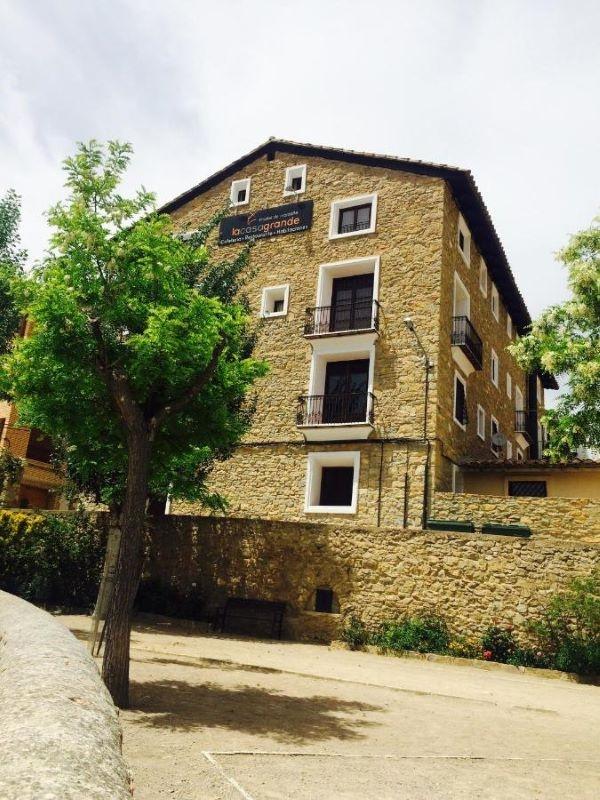
The first thing we noticed about the room was that there were plenty of radiators but NO air con, to be fair this was our fault for not double checking when booking.
The room was a good size with a nice big comfortable bed and the bathroom was more than adequate for a one nights stay.
The outside terrace area which looked so nice and inviting in their photos, was sadly untidy and uncared for.
The only bonus was that this Hostal had a lift, which is quite rare, the only problem was we had to stand cheek to cheek, but it did get us to the 3rd floor.
The real problems started when due to lack of anywhere else to eat in the village, we headed to the onsite restaurant, we asked to see the menu del dia, which we saw another couple had and were told "no sorry, this is not available at night" not to cause any trouble we ordered from the normal menu, which did not have a great deal of choice and was expensive. Bread and our bottle of wine were delivered to the table, all ok so far, but I had ordered the sirloin steak, when it appeared, there was more fat on it than meat and it could not even be cut with the steak knife provided, when this was pointed out to the waiter, he promptly gave me a butter knife..... not quite sure how that was going to be better than a sharp steak knife, complaining again they offered to cook me another steak, was this any better.... NO just the same, fatty and inedible. To be honest this was the worst meal during our whole 10 day road trip, and such a shame as it was our last night.
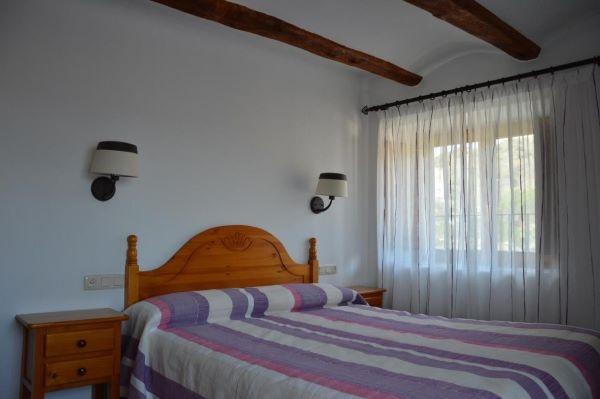
Sleeping - You would think being in the middle of the mountains in a small village, it would be quiet at night, sadly this was not the case and we were both awakened at around 5am with dogs barking which sounded like something from the hound of the Baskervilles movie and the local council emptying the bins, going outside for a cigarette we actually discussed leaving and cutting our losses, (we had already paid, but would be skipping breakfast) but decided it was too early to really go anywhere, so back to bed and managed to make it until breakfast was served. This again was a bit of a disappointment, the baguettes were already pre toasted and cold,, so our tostada con tomate was not up to its usual standard and every other guest seemed to be served their coffee at the table where as we had to go to the bar for ours.
Would we stay here again? That would be a NO, we have no idea how they have a 3 star rating and a 9.2 score from the booking company, they certainly did not get a glowing review from us.
Next stop - Home via one of our favourite places, Montanejos.
Additional Pictures Below





